Bonaire is the easternmost of the three so-called A B C islands, which are part of the Dutch Antilles off the coast of Venezuela.
The popular holiday destination Aruba is Bonaire’s little sister, while Curaçao is the bigger and apparently more important one.
This makes Bonaire seemingly the oftentimes overlooked middle child.
Very unjustly so, since although it might be lesser known, B is still at least as beautiful and varied as its siblings A and C.
Need proof?
No problem: In this post, I’ve put together the best activities you can enjoy on beautiful Bonaire in one week – even if you are not diving.
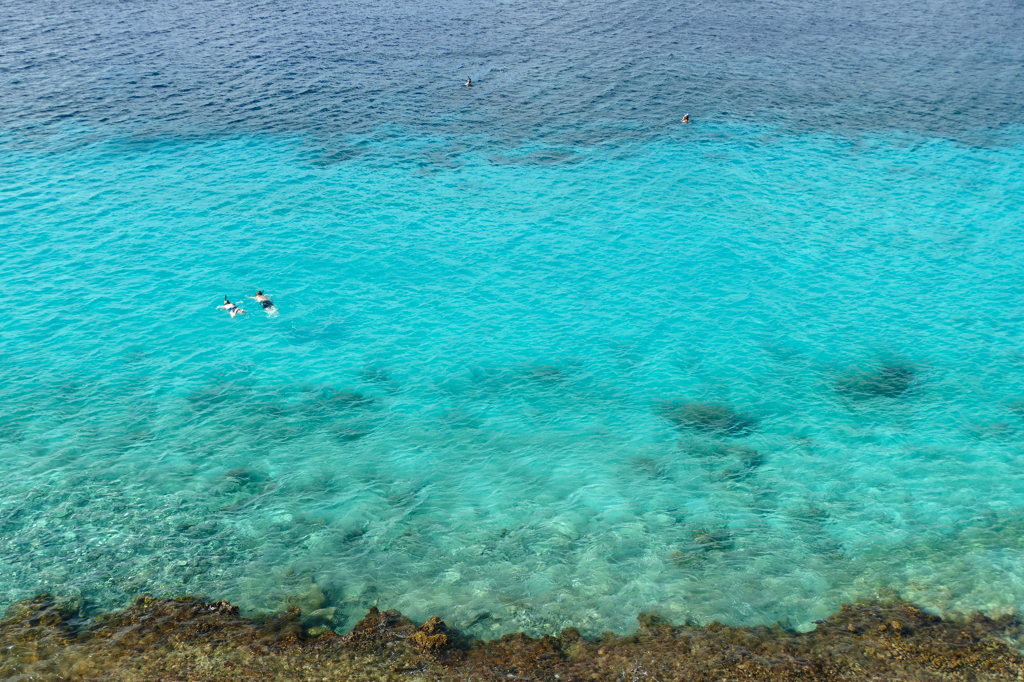
Bonaire
While the island of Bonaire is geographically part of the Lesser Antilles, obviously, it politically belongs to the Netherlands, a place in the heart of Europe and almost 8,000 kilometers away. Consequently, King Willem-Alexander is the head of state, but a governor represents the monarch on the island. With an area of almost 290 square kilometers, Bonaire has a population of about 20,000 people and 10,000 flamingos.
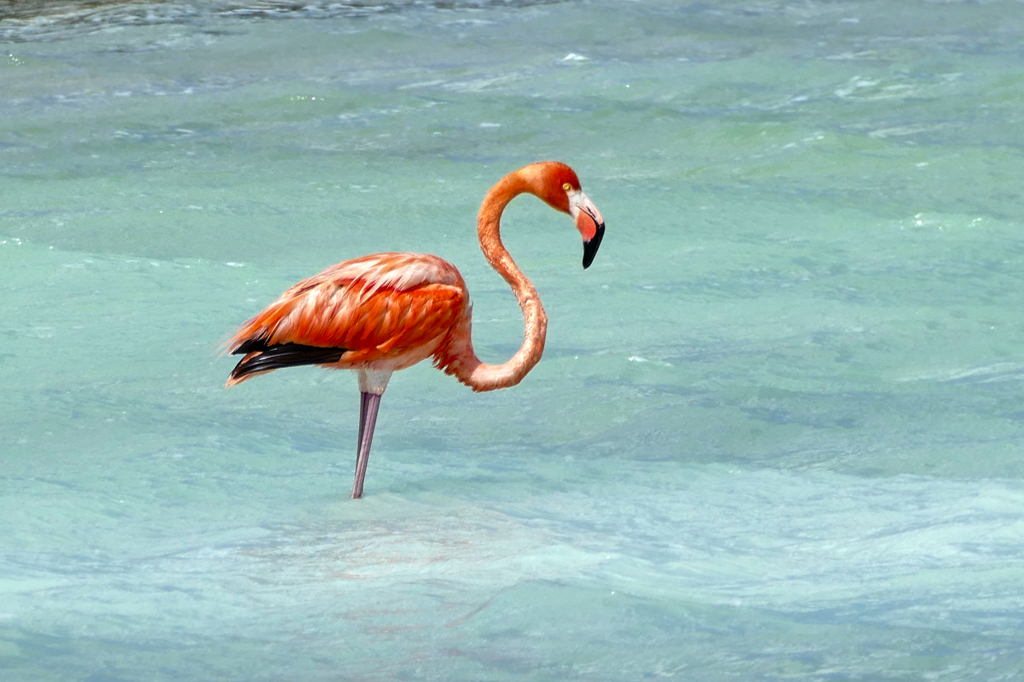
The island consists almost entirely of coral rock and is surrounded by reefs made up of about 60 different coral species. No wonder Bonaire is particularly famous for its rich underwater world and is therefore popular among divers. By the way, the name of the island’s capital is Kralendijk, which is an alteration of the Dutch word Koralendijk and translates to coral dike; makes total sense.
Each of the three ABC islands has a motto, and Bonaire’s is It’s in our nature. I love the relaxed and self-evident mindset and the clever double-meaning. With a cool’n’friendly shrug, it refers to the laid-back yet convivial attitude of the local people. But at the same time, it describes the abundance of natural beauty that Bonaire offers all around.
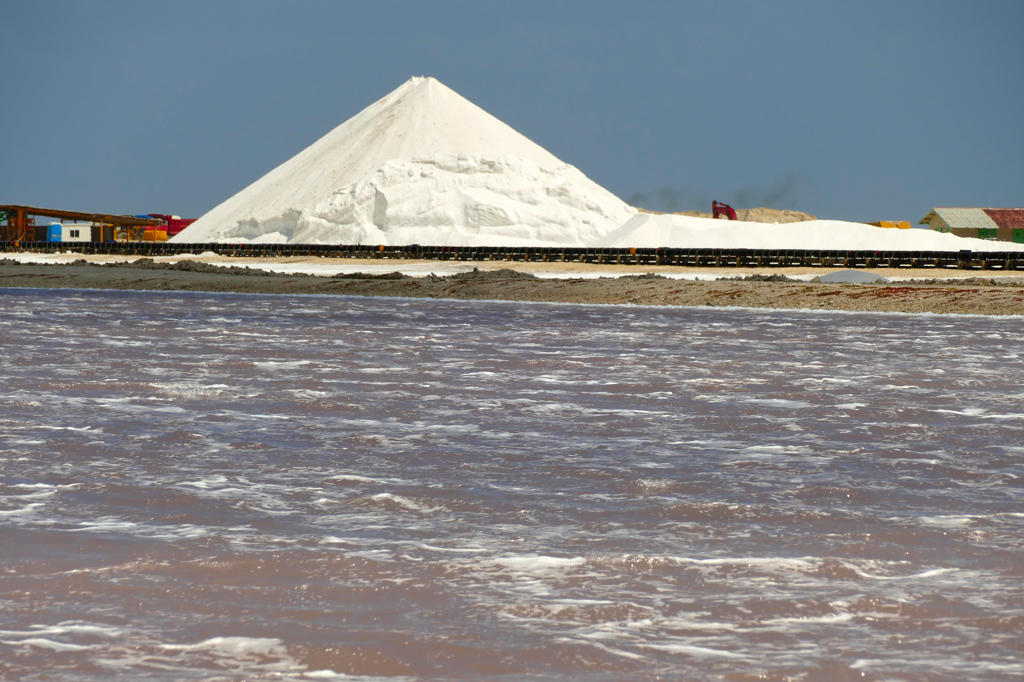
I mean, even the island’s only industry, namely the salt plant in the southern flats, doesn’t look intrusive or even destructive like other plants do. On the contrary, the natural salt plains offer over ten thousand flamingos a safe refuge to breed or just hang out. Admirers are requested to keep their distance, accessing the site is strictly forbidden.
Cherish Nature
Thankfully, it’s in our nature is not just a shallow slogan on Bonaire. The islanders are taking very good care of their natural treasures – I guess it’s in their nature.
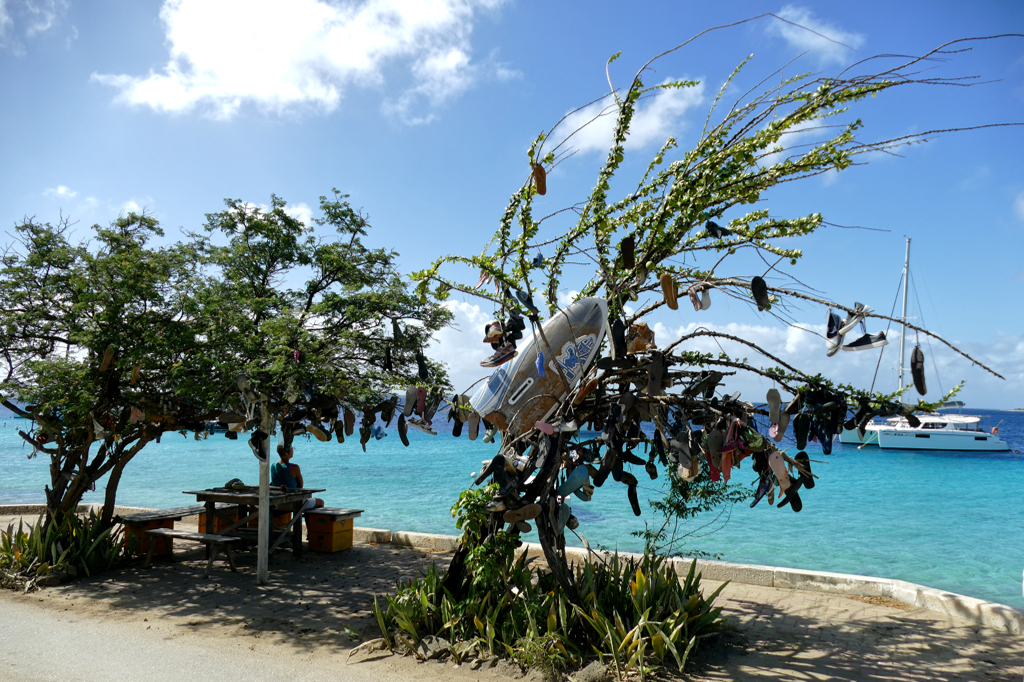
Not only do they keep the isle squeaky clean, they also take various measures to protect what they love and what makes them beloved. There is info and warnings on how to behave and what not to do everywhere.
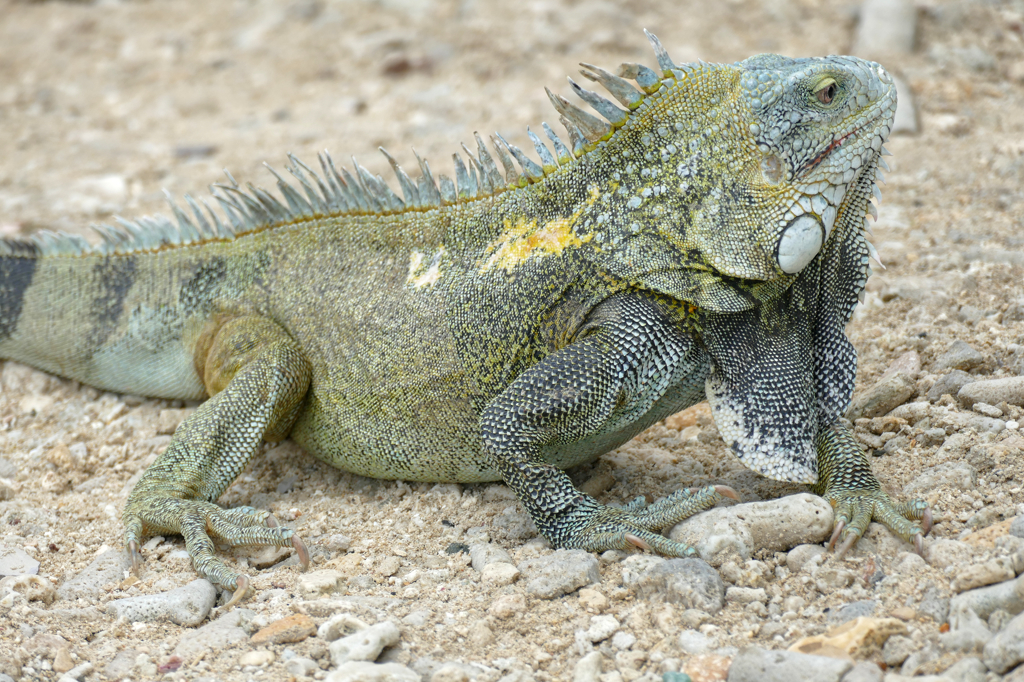
You won’t get fast food in those nasty styrofoam boxes, and drinking straws are made from paper. Also, visitors who want to join the fun’n’beauty either in the depths of the Bonaire National Marine Park or at the Washington-Slagbaai National Park need to contribute by paying a nature fee. I personally think this is the least we can do to preserve and protect what we love.
The Best Activities Beyond Diving
I have a printed map of Bonaire, which shows no less than 63 designated diving spots. I’m pretty sure this is the reason why the island is mainly popular for activities underwater. However, there is also a lot you can do in and above the water, and don’t underestimate the wonderful things you can experience on the island without getting even your toes wet.
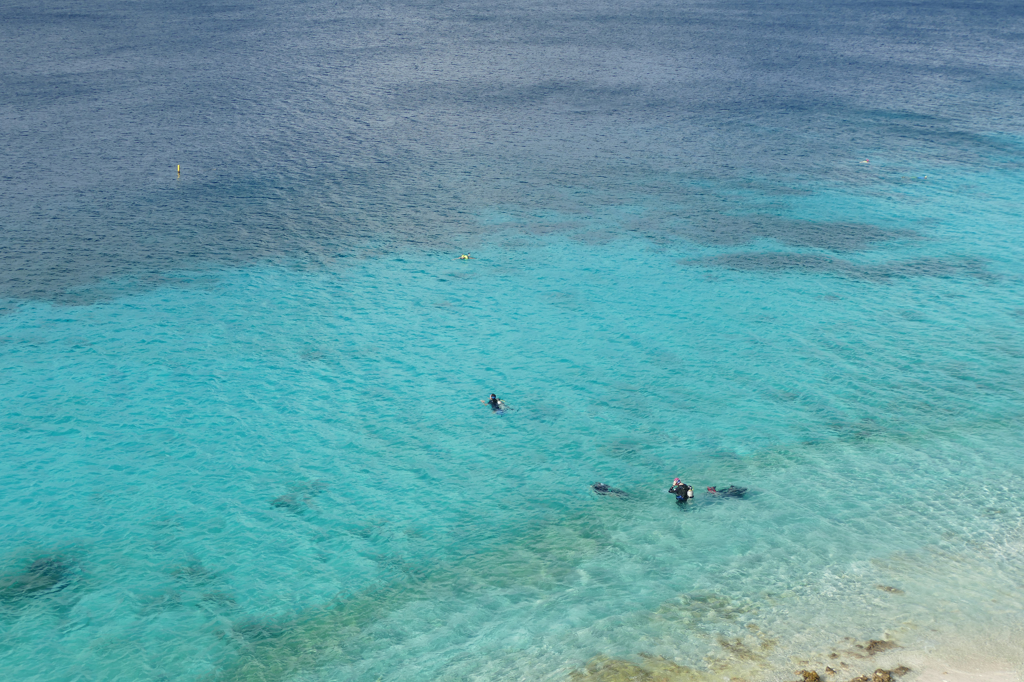
Below, I’ve put together what I think are the most intriguing activities you shouldn’t miss out on when visiting the island. Obviously, it wasn’t possible to avoid a little water altogether, however, joining in, you can definitely leave your wetsuit at home.
Kralendijk
Bonaire’s capital Kralendijk is located in the southern part of the west coast. It is one of only two towns on the island. The other one is Rincon which lies inland and much further north. As a matter of fact, Rincon is the oldest settlement since Kralendijk was installed only at the beginning of the 19th century by English settlers. They constructed the townlet around Fort Oranje which actually had existed since 1639.
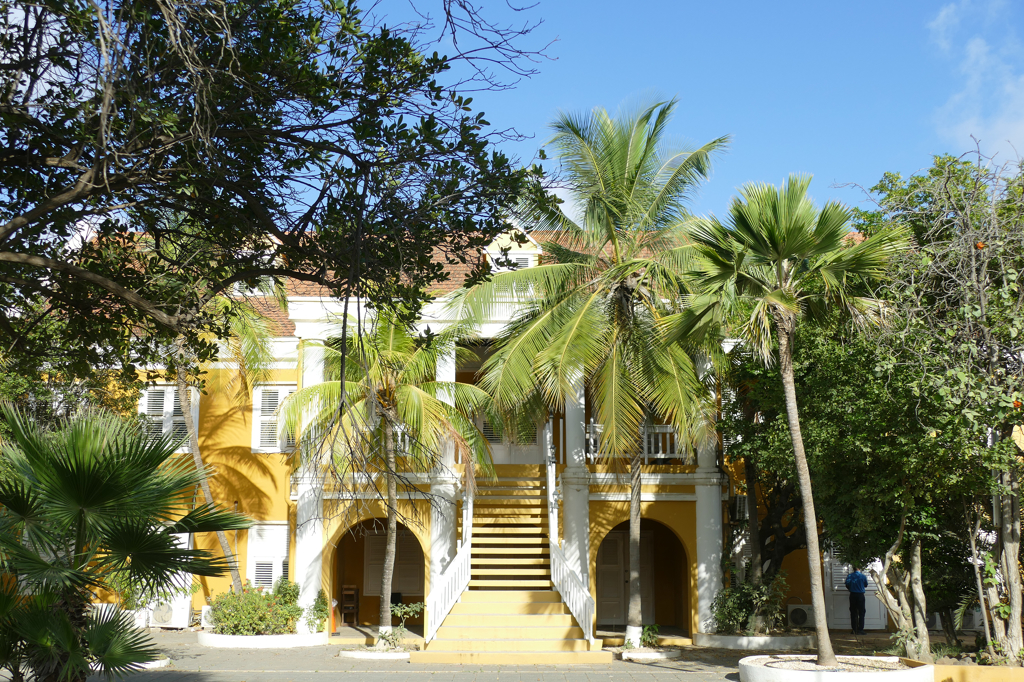
Since Bonaire’s Flamingo International Airport as well as the cruise port are in Kralendijk, every visitor has to pass through the city. And that’s actually a good thing since the town is absolutely darling.
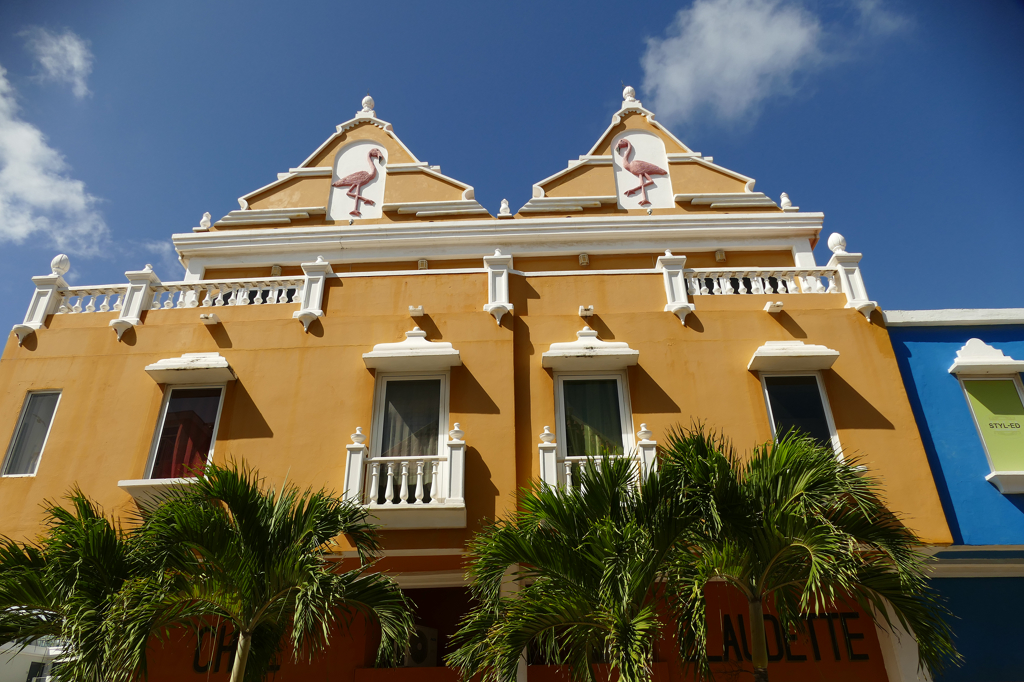
Please do not expect a bright lights, big city sensation. Although the majority of Bonaire’s population lives in one of the five boroughs, Kralendijk has more of a village vibe to it.

Only the streets and alleys of the very center are lined with two-storey buildings – basically local skyscrapers. Painted in bright colors, they are housing specialty shops, boutiques, ice cream parlors, and cafés. Everything is pretty, picturesque, and pleasant.
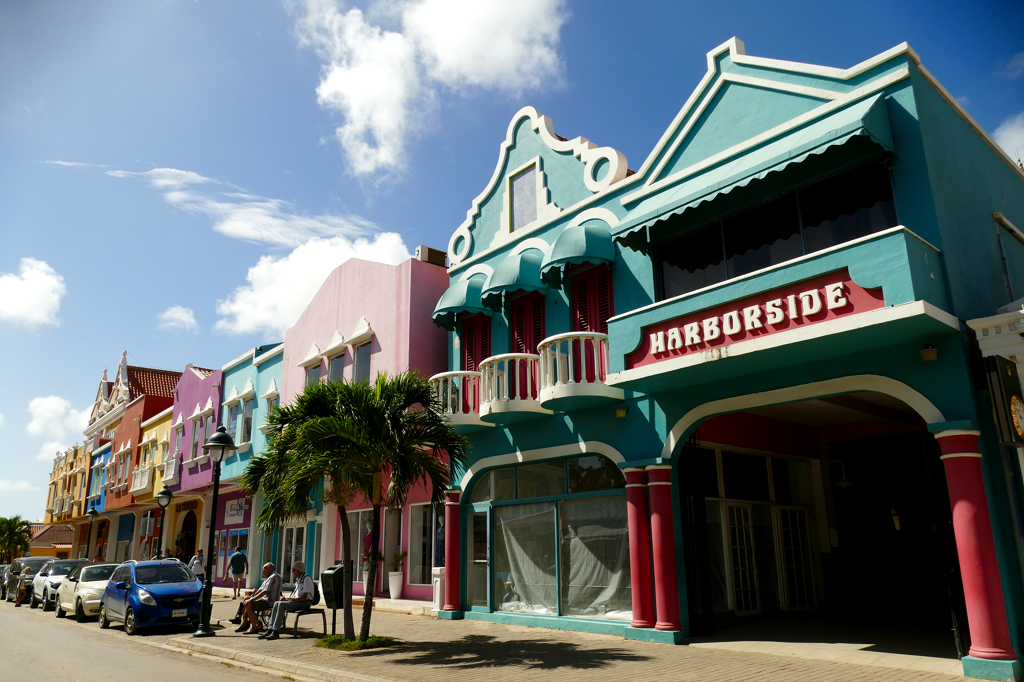
You undoubtedly won’t need days for a complete city tour of Kralendijk, but you certainly should spend at least a couple of hours just strolling around – actually, already the term walking sounds far too hectic for this laid-back place – taking it all in. Especially the main street Kaya Grandi and the adjacent alleys’n’arcades are charming and just beautiful.
On the Town
If you are interested in seeing some of Bonaire’s historic buildings, there is a map on the southern side of the main square Wilhelminaplein. I’m sure you’ll be pleased to learn that all of these landmarks are within short walking distance. However, if during your walk you should get hot’n’tired, the next cozy waterhole won’t be far.
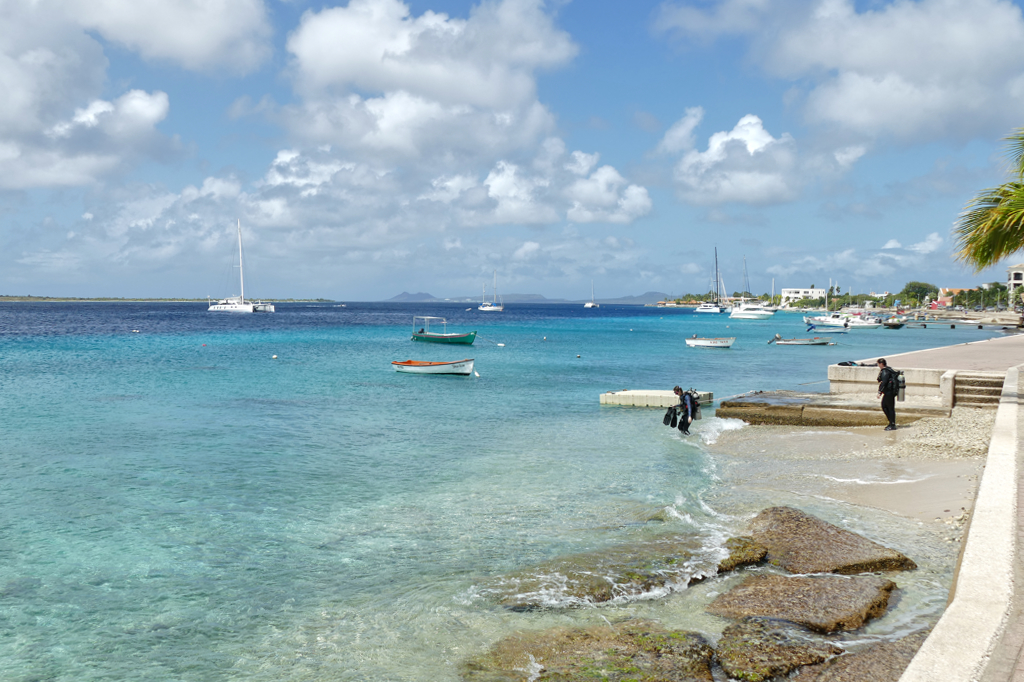
Another wonderful stroll takes you up the Kaya J. N. E. Craane. This boulevard runs alongside the western shore so that you have a mesmerizing view of the clear waters turning from turquoise into deep ink blue. Yes, there are a couple of boats bobbing offshore, yet, if you feel like taking a refreshing dip, don’t be shy, just go for it as many people do so at any hour of the day.

Looking out on the sea, you’ll spot an island flat like a pancake. That’s Bonaire’s little sister, cleverly called Klein Bonaire which translates to Little Bonaire – go figure.
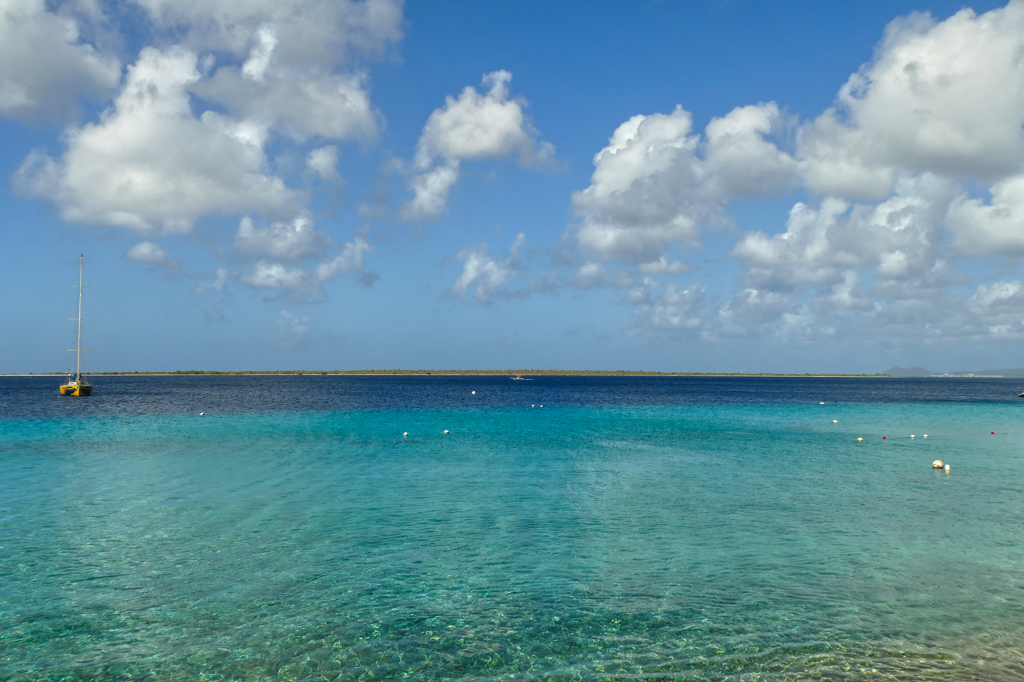
Since I’m introducing this extra-precious gem below, at this point, I only announce quickly that a visit is an absolute must.
Bonaire’s Museums
Although the most recommendable activity when in Kralendijk is to go with the flow, to shift down a gear, and to immerse in the loveliness and serenity around you, there are two museums I’d like to point out. On Kaya J.C. van der Ree is the Museum of Natural History. Already the building is worth the visit: It was constructed by a Venezuelan plantation owner in 1885 and eventually purchased by one of the most powerful families on Bonaire.
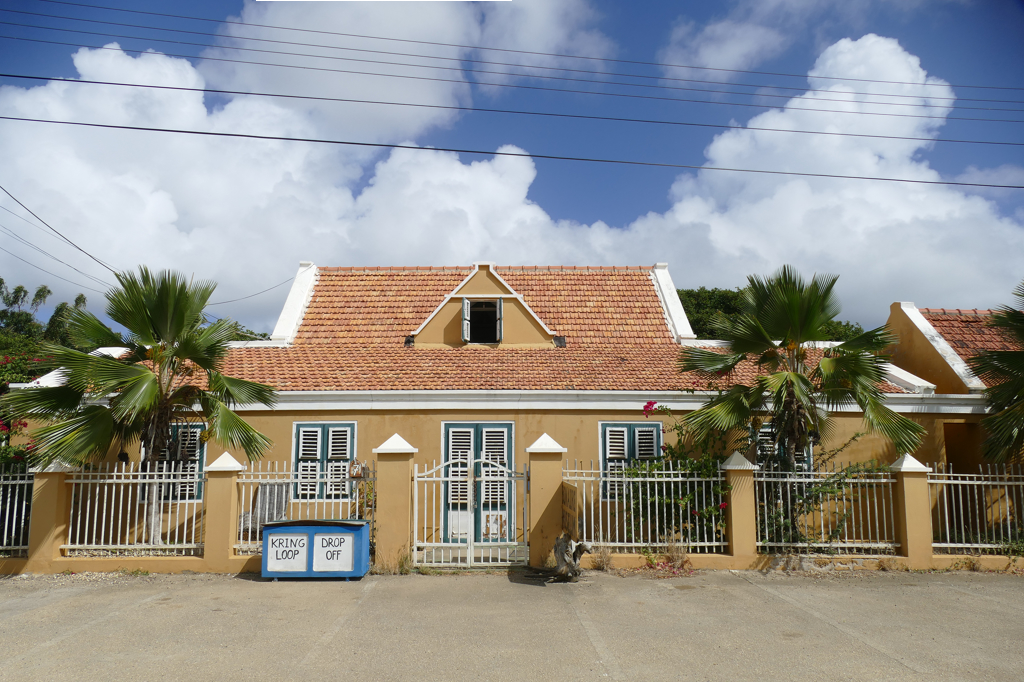
The museum exhibits many interesting things from Bonaire’s nature and culture. You can visit it from Wednesday to Saturday between 9 a. m. and 4 p. m. free of charge.
The archaeological Terramar Museum is even more popular. It is located on Kaya Isla Riba between the seafront promenade and Kaya Grandi. Prepare for a voyage through 7,000 years of Caribbean history. Apart from spectacular exhibits, you’ll get to see amazing reconstructions in 3D and interactive displays. The museum is open from Monday to Saturday between 9 a.m. and 2 p.m., albeit, on Fridays, it closes at 1.30 p.m. and on Saturdays already at 1 p.m. The general admission for foreign visitors is 10 US$.
The Idyllic South
We are leaving Kralendijk and going towards the south. To my stupefaction, the magic of hues continues. Instead of buildings in bold colors, we have the ocean in cool shades of turquoise and blue to our right. To our left is water, too, but it shimmers in an unusual shade of pinkish purple. “These are the salt lakes”, explains Rolando. Although both his parents were originally from Curaçao, he was born and raised in Bonaire and is part of the local tourist board’s amazing staff.
If you’ve followed my blog for a while, you know that although I do have a driver’s license, I haven’t been driving for decades. And since I insist that there are far more places that you can explore by public transportation than most people believe, on the ABC islands it’s really tricky.
So I lay down my arms and admit: It’s quite complicated to visit the islands without your own vehicle. While in Aruba and Curaçao is at least a limited bus service, on Bonaire it’s practically non-existent. You do need a car. Albeit, to explore the south of the island, a scooter or even a bicycle might definitely do, too.
Diving In
Every couple of hundred meters, we seem to pass a spot where people in diving gear are entering the waters. On the map Rolando handed me, I’m counting 63 marked diving spots around the island and another 27 around the small island of Klein Bonaire. Also, most of the dive sites are accessible right from the shore. They are marked by yellow rocks along the road. So now I definitely understand why Bonaire has been popular with divers for the longest time.
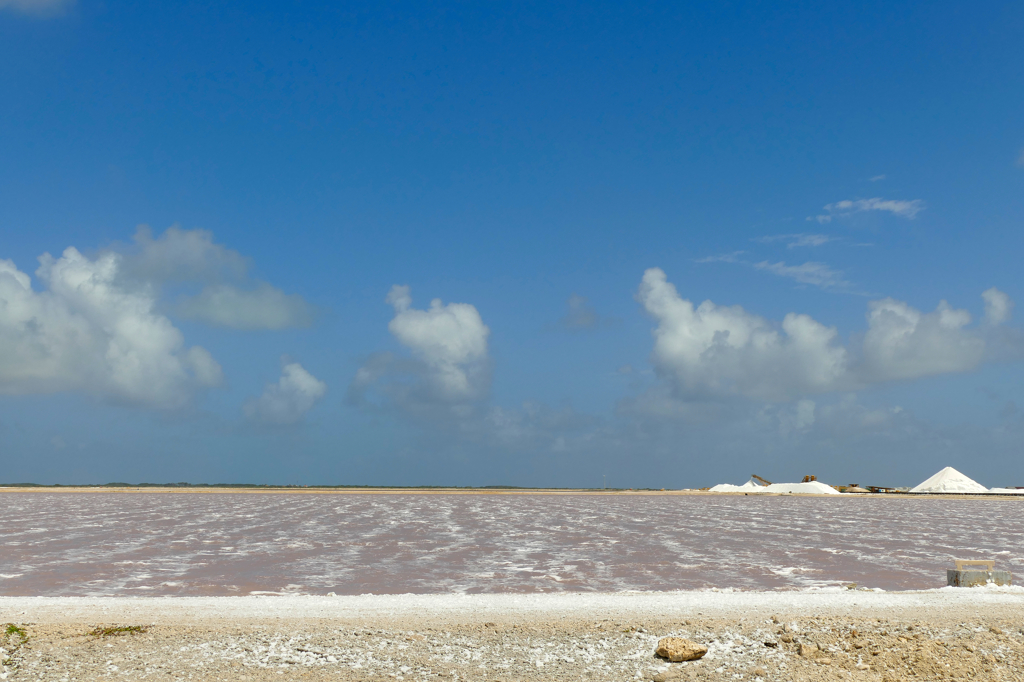
But I’m not diving, and yet the island has some pretty amazing things for me in store.
As I mentioned above, to our left are the salt pans. Basically, the entire south of Bonaire is used for salt production. This quite eco-friendly industry utilizes the combination of sea, salt, and winds on Bonaire to produce between 300,000 and 500,000 tons of the finest natural salt.
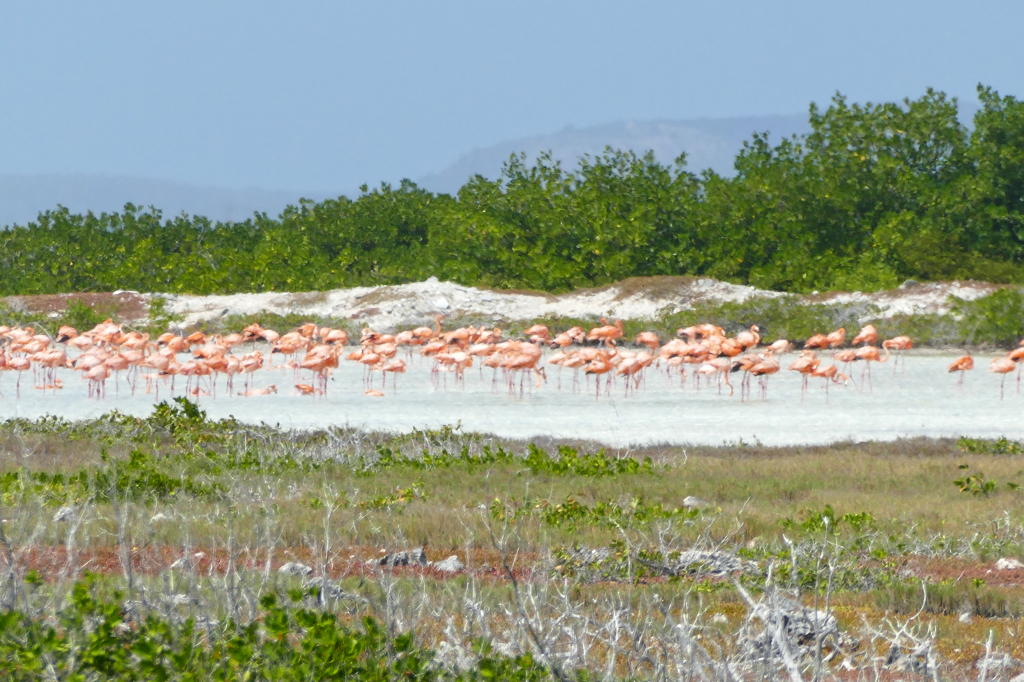
That’s impressive and beautiful, but what makes the salt pans even more attractive are their inhabitants. Flamingos are breeding undisturbed in the midst of the flats that people are not allowed to access, obviously. Understandably, they build their mud nests so far from the road that I can only make out a peachy pink stripe on the horizon. But as some of them do make their way closer to us motorized intruders, I finally get to admire their beauty and grace from a shorter distance.
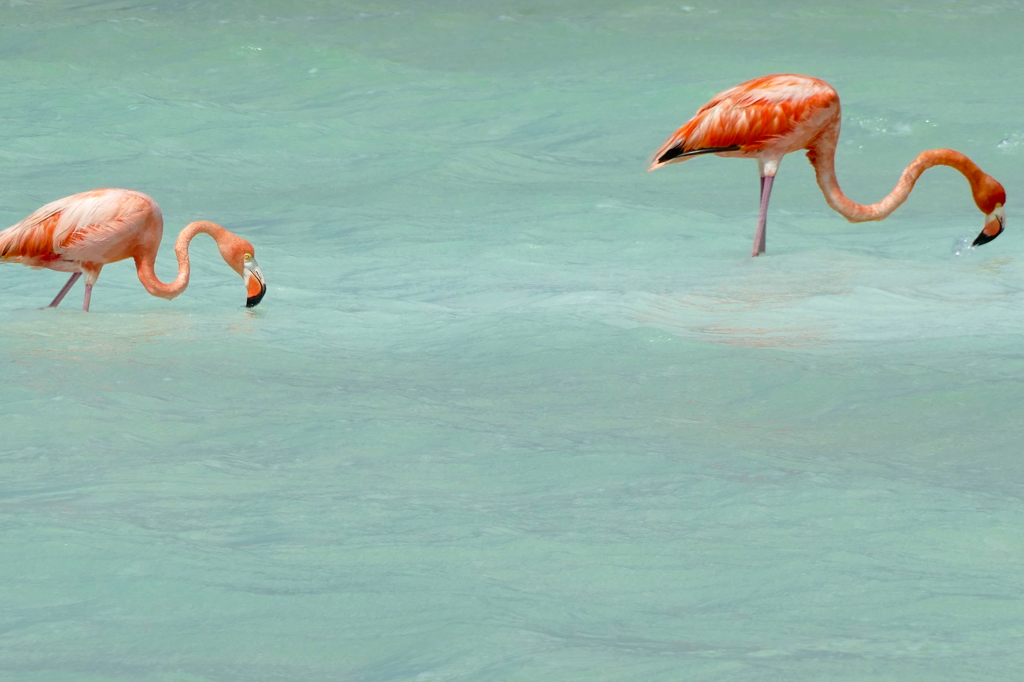
They are one of the main reasons I came here. I’m happy.
Wildlife on the Wild Coast
We go around the island’s southern tip, pass the old lighthouse and continue back north on the east coast. What all three ABC islands have in common is a hospitable west coast with calm waters. In harsh contrast, the east coast is rough’n’rocky and the waves are dangerously high.
Nevertheless, there are a couple of sandy coves, and most importantly, there is Lac Bay. Lac Bay is a shallow lagoon bordered by mangroves to the north and closed off to the open sea by a coral dam. The bay has two beaches, and we take a short break at Sorobon.
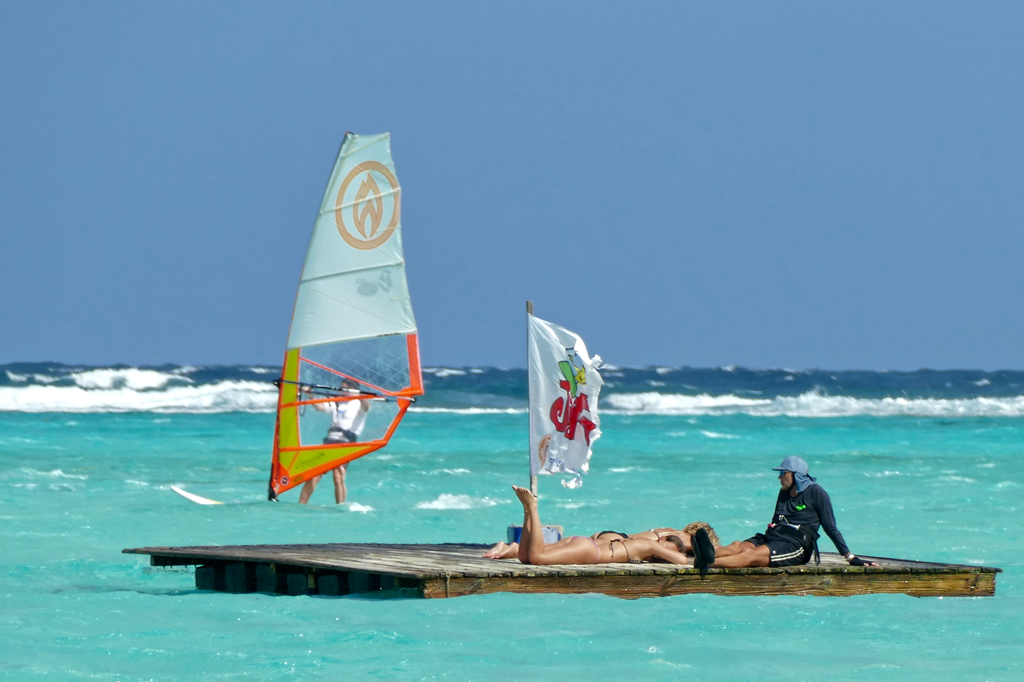
It has kind of a beach club feel to it but lacks the somewhat forced hipness many of these places have. Sorobon is the ideal place for windsurfing as there are those strong eastern winds but at the same time, it is protected by the coral barrier. Once swimmers’n’surfers get hungry, they can grab a snack at a makeshift bar.
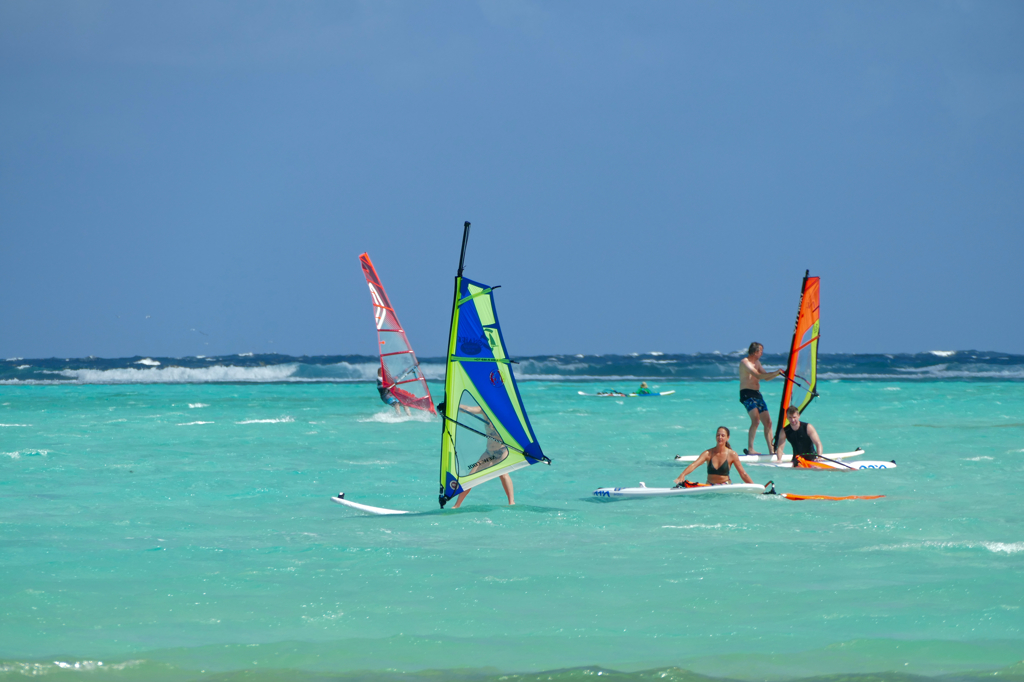
As we are slowly making our way back to Kralendijk, I get to see some other iconic wildlife, namely Bonaire’s famous donkeys. The Spanish conquerors brought their hooved forefathers with them for work in the 17th century. There are said to be around 1,000 of them on the island.
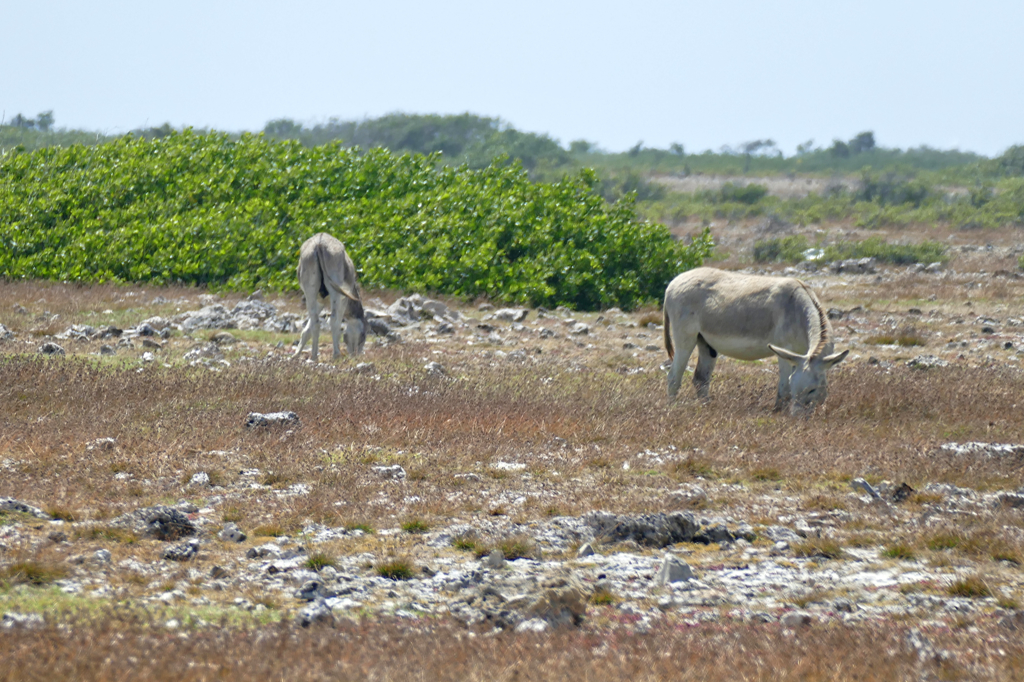
While about half of those roam freely, the others found a safe home at the Donkey Sanctuary south of the airport on the Kaya Ir. R. Statius van Eps. This shelter can be visited every day between 10 a. m. and 5 p. m. For an entrance fee of 10 US$, you can tour the sanctuary walking, by bicycle, or by car.
The Rough North
The next morning, we are leaving Kralendijk towards the north. Although it’s not exactly a tropical jungle up here, the vegetation is denser and much greener. Therefore, Bonaire’s few plantations have been around this area. Also, the island’s first capital Rincon is in the northern part.
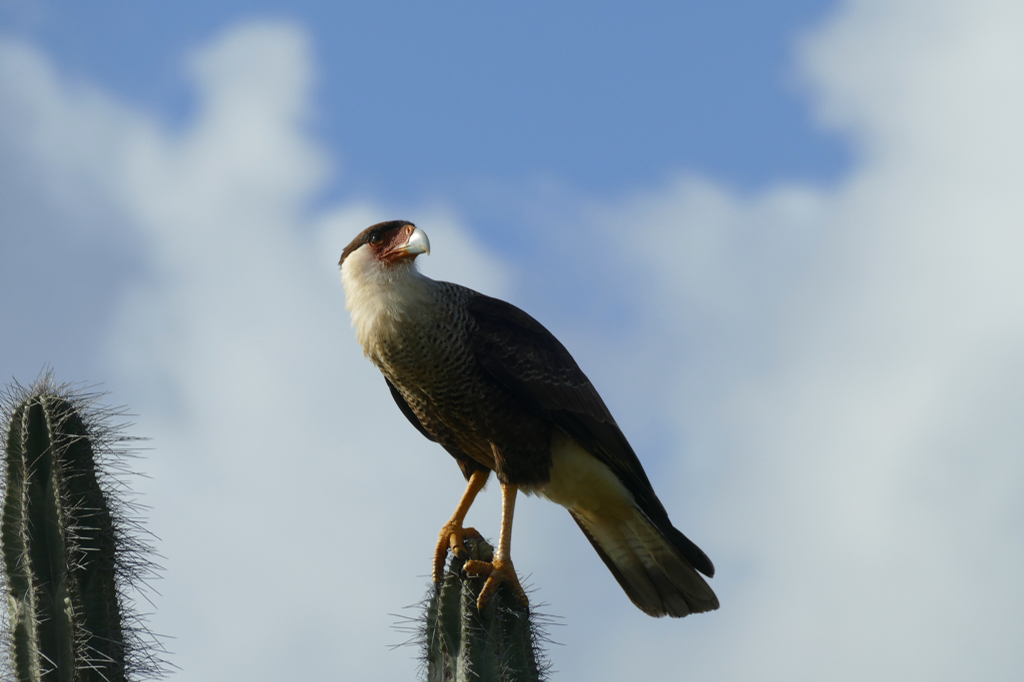
“We call this the tourist route”, explains Rolando as we are winding our way on the narrow road alongside the coast. “We locals take the shorter road inland.” Well, I am a tourist, hence we choose the more scenic way to get to the Washington-Slagbaai National Park. On our way, we pass incredible coves and bays where some early risers are getting ready for the first dive of the day.
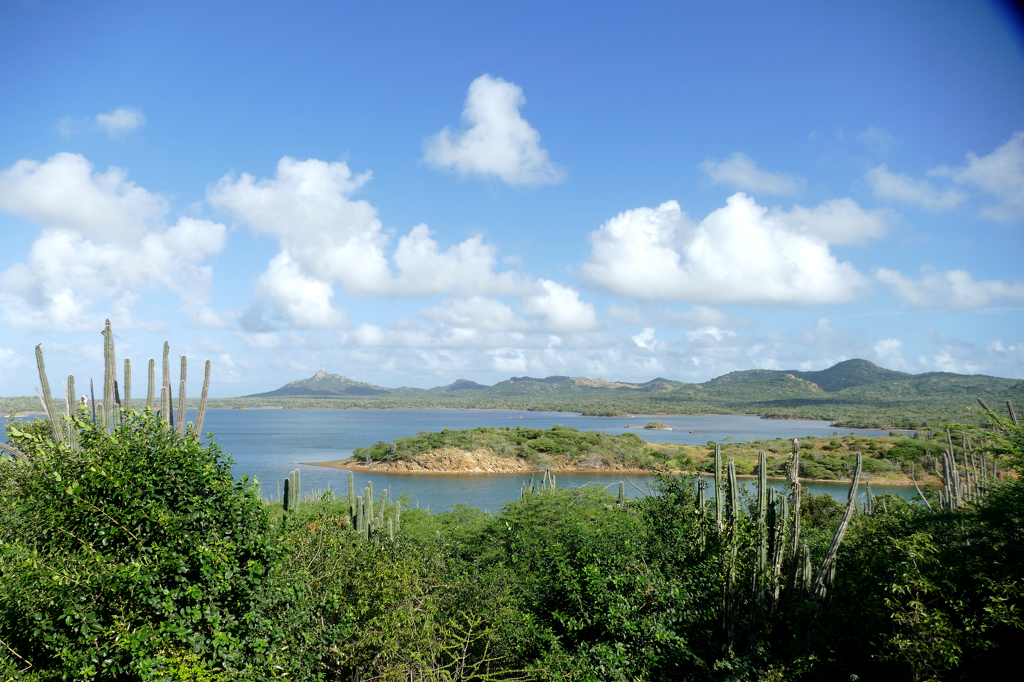
Passing the abandoned plantation home Landhuis Karpata, we turn right, and before my eyes opens the Gotomeer. This beautiful saltwater lake was created as corals formed a barrier, cutting the lake from the sea. Obviously, this is another perfect habitat for Bonaire’s flamingos.
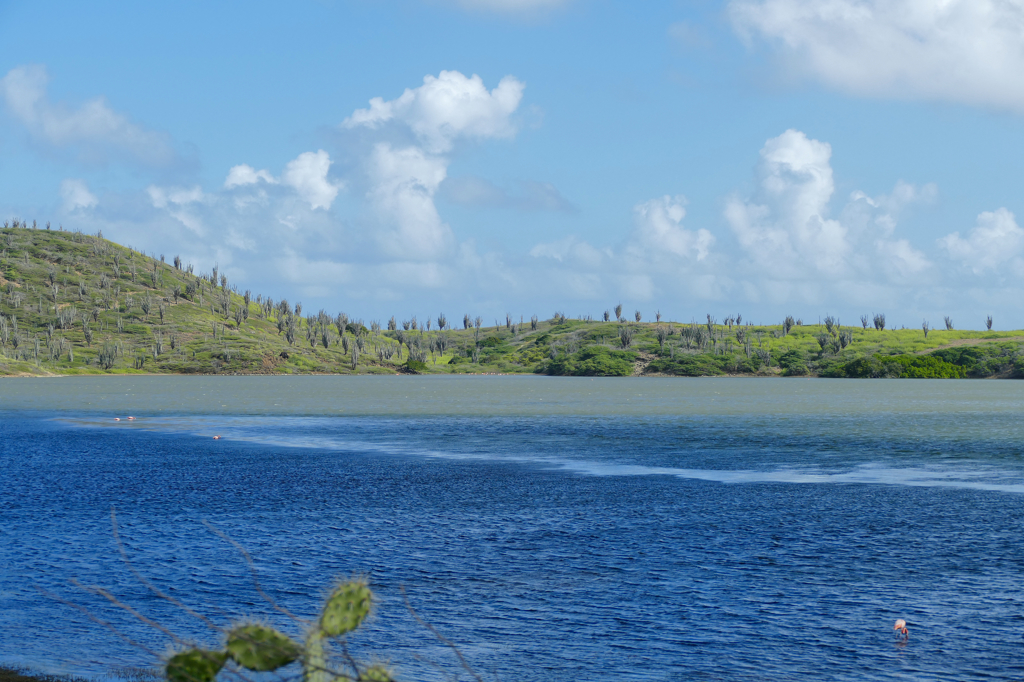
From here, we are crossing the island northwards to the main entrance of the Washington-Slagbaai National Park. Established in 1969, this ecological reserve covers approximately a fifth of the entire island.
Life Is a Rollercoaster
“In 1999, as Queen Beatrix visited the island, I was the delegation’s designated driver”, remarks Rolando casually as we are bumping down a dirt road furrowed by deep, crooked ditches. How lucky am I that a royal driver chauffeurs me through this natural rollercoaster! I wonder how other visitors manage to drive this road. Must be a nightmare.
There are two routes through the park. A short one that is signposted in green, and a longer one marked by yellow signs. You don’t need to drive if you don’t want to. You can go on this wild trip also by mountain bike or even hiking.
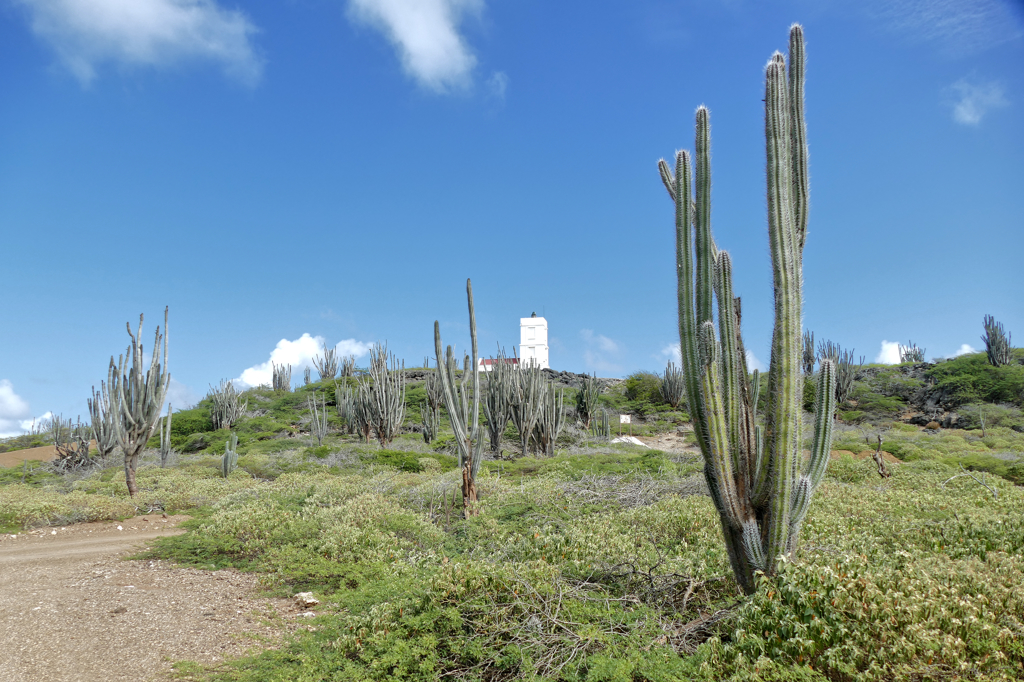
Crooked wind dodgers – the most iconic of them is the Divi tree – and high-rising kadushi cacti are lining the narrow road. They can grow to an amazing height of up to 18 meters. Locals use them as fences, musical instruments, in soup, and fermented into liqueur.
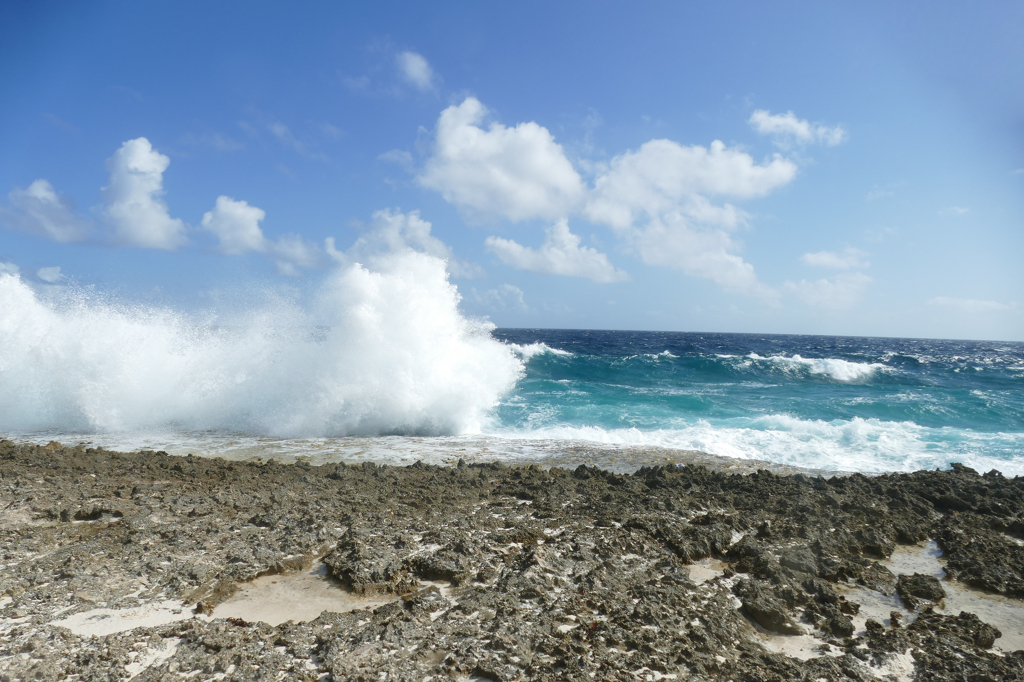
We stop to watch the waves crashing in at Playa Chikitu before we continue to the so-called blow hole. Here, the waters are jetting up as if they were ejected by a giant whale. The forces of nature are definitely intimidating.
Ghosts From The Past
Going alongside the coast, we finally reach one of the most famous spots, namely the Boca Slagbaai. This prominent cove is located across from Saliña Slagbaai, another good place to observe flamingos.
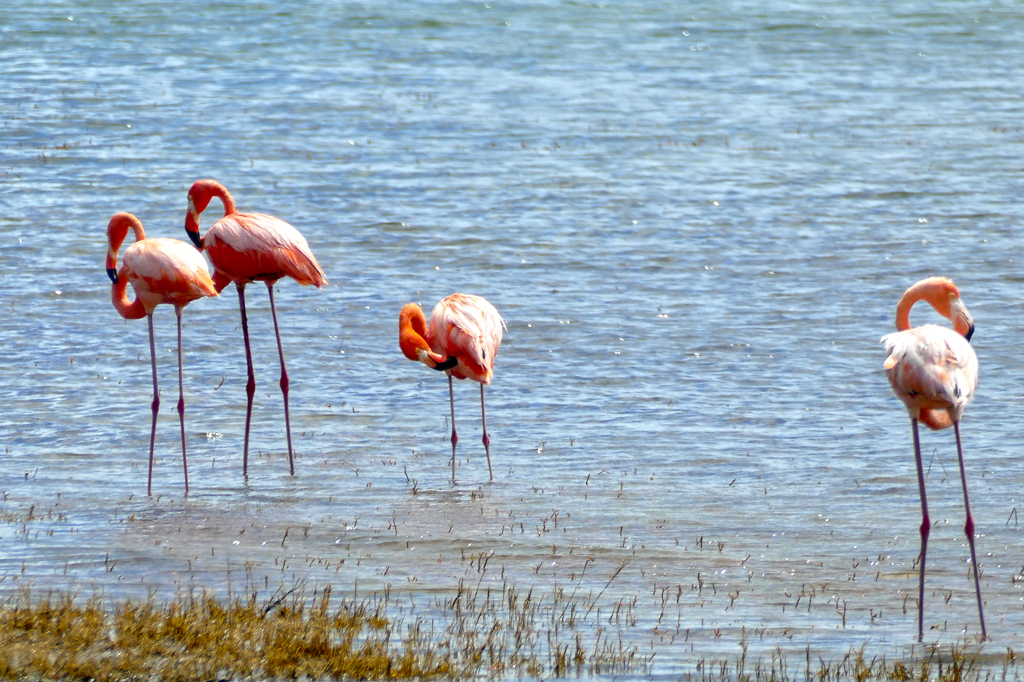
The bay got its name from the Landhuis Slagbaai, a complex of colonial buildings which used to be the main seat of the former plantations Slagbaai and Washington. Any idea where the park got its name from?! These plantations used to produce and supply various local products like salt, aloe, and goat meat. As a matter of fact, Slagbaai is an alteration of slaughter bay which might give you a graphic idea of what was going on.
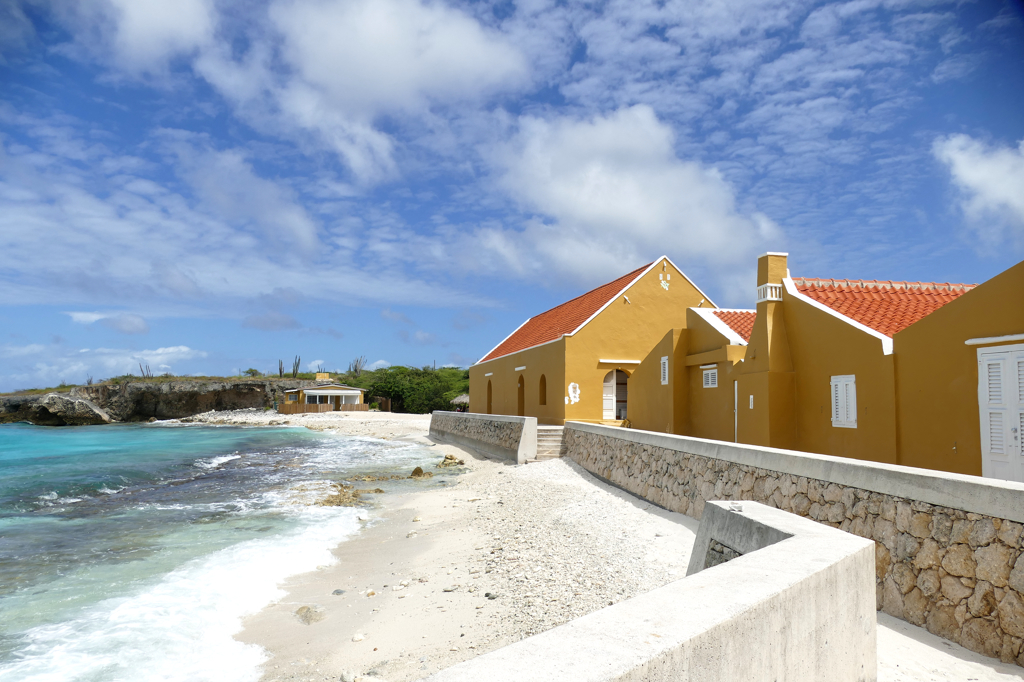
Howsoever, behind the building complex is a small beach where you can sunbathe, swim, and snorkel.
For us, it was the last stop on our wild ride through this wonderful reserve that once more made me fall in love with the island of Bonaire.
It’s in Bonaire’s nature, indeed.
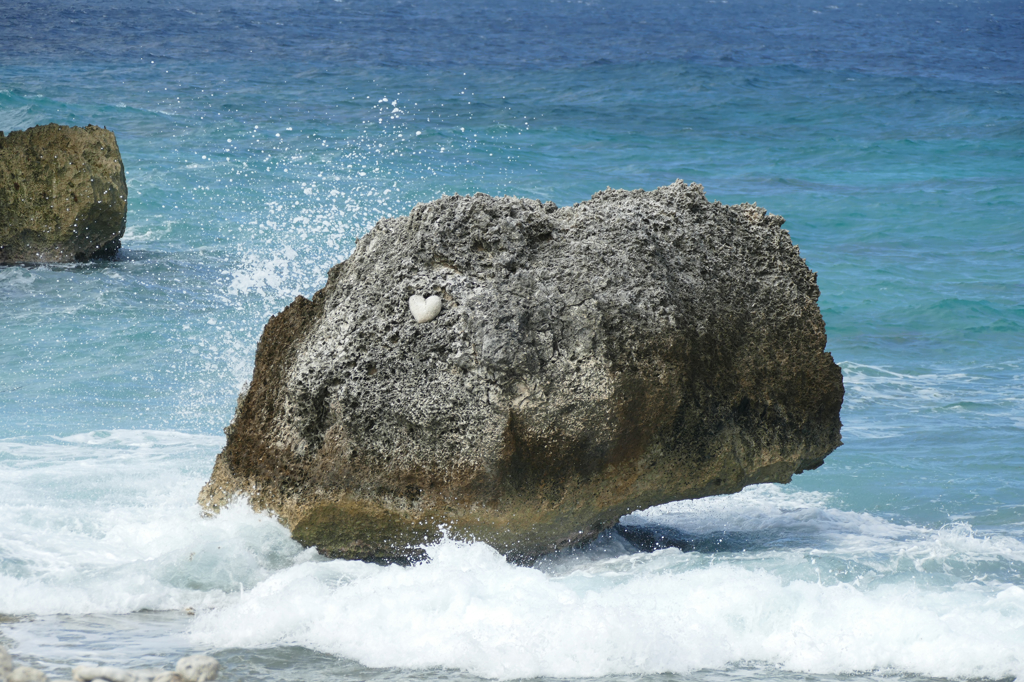
The Washington-Slagbaai National Park can be visited every day between 8 a.m. and 4 p.m. Once you have obtained your Nature Tag – see below – you can visit the park as often as you like within the same calendar year.
STINAPA and Bonaire’s Nature Tag
I think this is the perfect moment to explain Bonaire’s Nature Tag and why it is important to get one.
The organization Stichting Nationale Parken Bonaire, in short STINAPA, was founded in 1962 and manages Bonaire’s nature parks on behalf of the local government. This applies to the Bonaire National Marine Park, hence, the amazing underwater world that surrounds the island, and to the Washington Slagbaai Park, covering almost one-fifth of the island’s northern part.
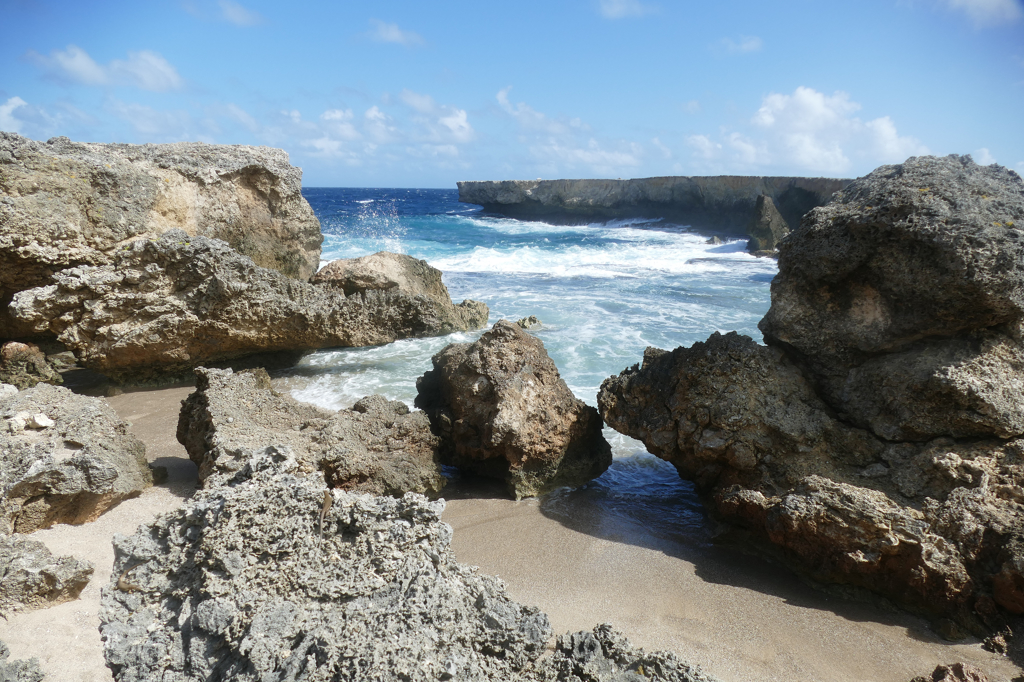
Funds are needed to preserve and protect those natural treasures and Bonaire asks its visitors to contribute with a relatively small fee: Every tourist that wants to go snorkeling, diving, or visiting the Washington Slagbaai Park has to pay 40 US$. This fee has you covered for a calendar year, hence, if you buy your Tag in February, you can use it until the end of December as often as you wish. To make things easy, you can obtain your Tag on STINAPA’s website.
When you are requested to show it for instance at the entrance to the Washington Slagbaai Park or at a dive shop, you also need some form of ID with your picture on it to prove that you are the legitimate bearer of the Tag.
Klein Bonaire
As I pointed out in the introduction above, it’s not possible to guide you across Bonaire and wholly avoid the sea. It’s an island, after all. More importantly, an island that’s world-famous for its rich waters.
Around 800 meters off the coast of Kralendijk lies the beautiful uninhabited coral island Klein Bonaire which translates to Little Bonaire. A very suitable name for an islet the size of about 6 square kilometers.
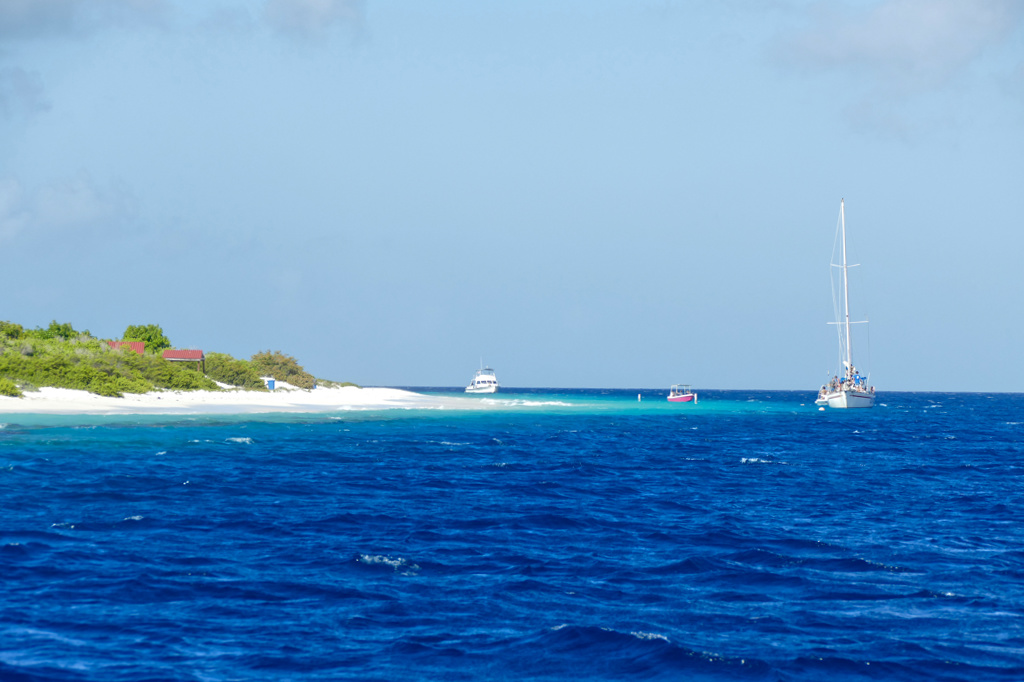
From 1868, Klein Bonaire was privately owned. In 1999, however, it became part of the Bonaire National Marine Park. The strait between Bonaire and Klein Bonaire is up to an incredible 180 meters deep.
While the islet is encircled by a beautiful white sandy beach, inland it’s covered by bushes and shrubs. However, a reforestation project was started in 2013. Klein Bonaire also has three small salt flats where Caribbean flamingos find a tranquil refuge.
Underwater Love
Obviously, Klein Bonaire is a fantastic place for diving and snorkeling. But even if you just want to sunbathe on soft sand or take a refreshing dip in crystal-clear water, I highly recommend spending at least half a day on Klein Bonaire. If you’re not snorkeling but still want to see the beautiful underwater world, a trip by glass-bottom boat might be a valid alternative.
However, the most popular way to cross the strait is by water taxi from Kralendijk’s waterfront promenade for instance at Karel’s Beach Bar. The first water taxi leaves at 9.15 a. m. and then every hour. You can come back from Klein Bonaire 15 minutes before the hour until 4.45 p. m. The trip takes about 20 minutes either way.
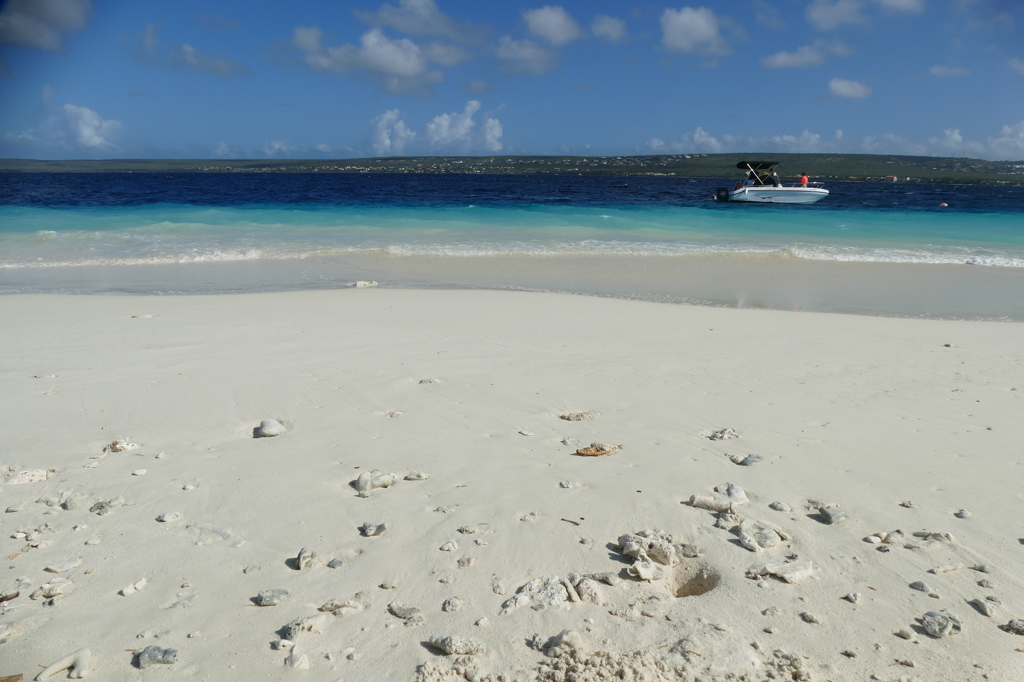
But wait a minute – 800 meters – shouldn’t it be possible to swim this relatively short distance?
Yes, you are absolutely right: Once a year, the local youth organization Jong Bonaire organizes the Swim to Klein Bonaire event. From the shore at Eden Beach, around 500 avid sportspeople cross the 800 meters to Klein Bonaire swimming. The aim is exercise and fun, however, raising as much money as possible for Jong Bonaire is also an important goal.
Stranded
There are no facilities on Klein Bonaire apart from two small thatched shelters. Next to them is an information board explaining the isle’s history and introducing its flora and fauna.
Most day-trippers come to Klein Bonaire for its beautiful coral reef. There are various options for exploring the underwater world. The captain on your boat or water taxi will precisely explain to you where to access the water and how to proceed. Mind you, you are invading protected waters and shouldn’t cause any damage to this fragile ecosystem.
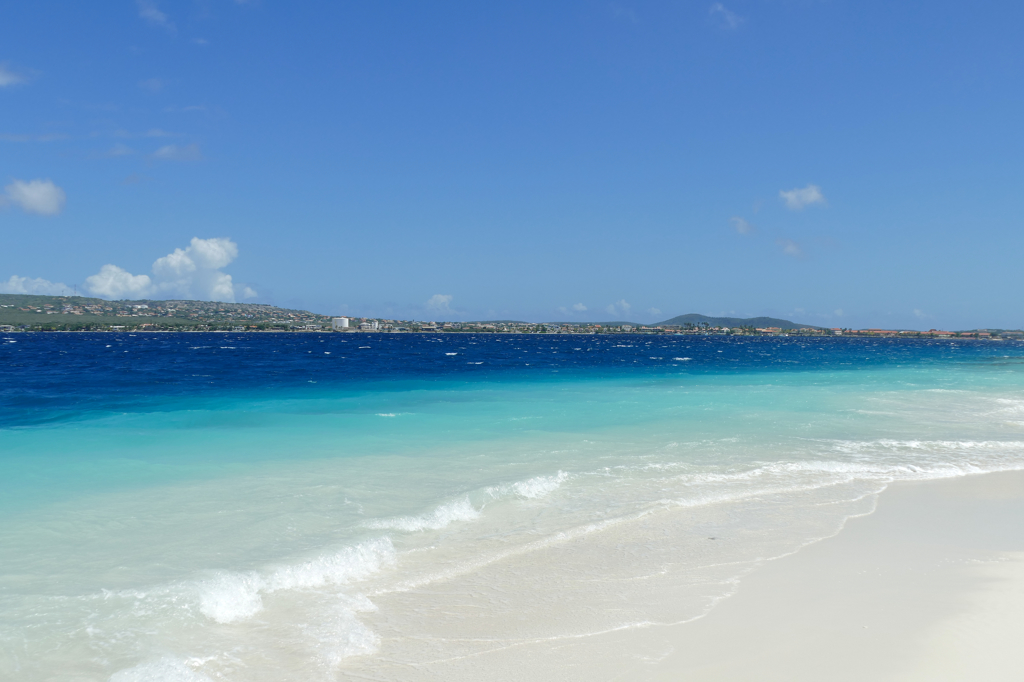
The average height of Klein Bonaire is only 1.3 meters above sea level. Since most visitors are busy exploring the underwater world, they pass on extended beach walks. But if you are planning on walking around the island, keep in mind that it’ll take around four hours. If you really want to do that in the hot Caribbean sun, put on loads of sun protection, wear a hat, have your phone fully charged, and make sure to take plenty of water with you.
Apart from some ruins of former slave quarters on the eastern side, and a small lighthouse on the southeast of the islets, there are remnants of the government doctor’s house on Klein Bonaire. Between 1849 and 1854, all ships calling at Bonaire had to stop in Klein Bonaire for cholera control. The isle basically served as a quarantine station.
My Tip
Avoid a visit to the serene island of Klein Bonaire on the days when the cruise liners get in. Those monstrosities are docking just off the otherwise dreamy promenade. They look like mean ogres paying a cute little dwarf a threatening visit – totally disproportionate. I don’t know how many passengers fit on those monster ships, but it must be a lot – and many of them decide to pay Klein Bonaire a visit during their stay. If you cannot avoid going on a cruise day, try to get on the first taxi that leaves from Karel’s beach bar at 9.15 a.m.
Murals of Bonaire
“There is a new activity on the island. It’s a self-guided street art and street food tour”, informed me Karin as we were preparing my stay in Bonaire. “Wanna try it out?” Did I just hear art? Did she just mention food?
Hell yeah, count me in!
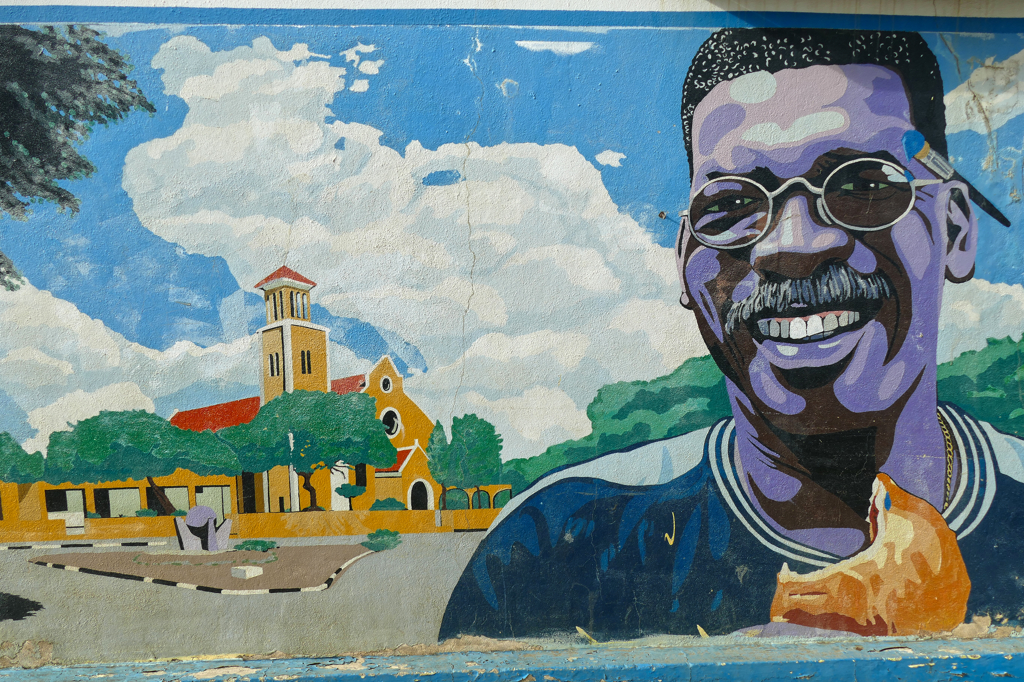
So on a sunny Saturday morning, I sit across from Reinier who is installing an App on my phone and explaining the functions. “You can go according to the numbers on the map or you just pick the murals you want to see. If you get hungry or you need a break, you can just stop at one of the food trucks. On the map, you are the blue dot.” Fine, I’m used to being the blue dot on a map, I’ve been the blue dot on the map in many cities around the world. So what can possibly go wrong?
Hitting the Road
After Reinier explains to me also the functions of a really sophisticated E-bike, I try it out in a sidestreet. I need to get used to the fact that the thing takes off like a rocket as soon as I tenderly touch the pedal. Let’s see how that’ll work out for me. I hit the road.
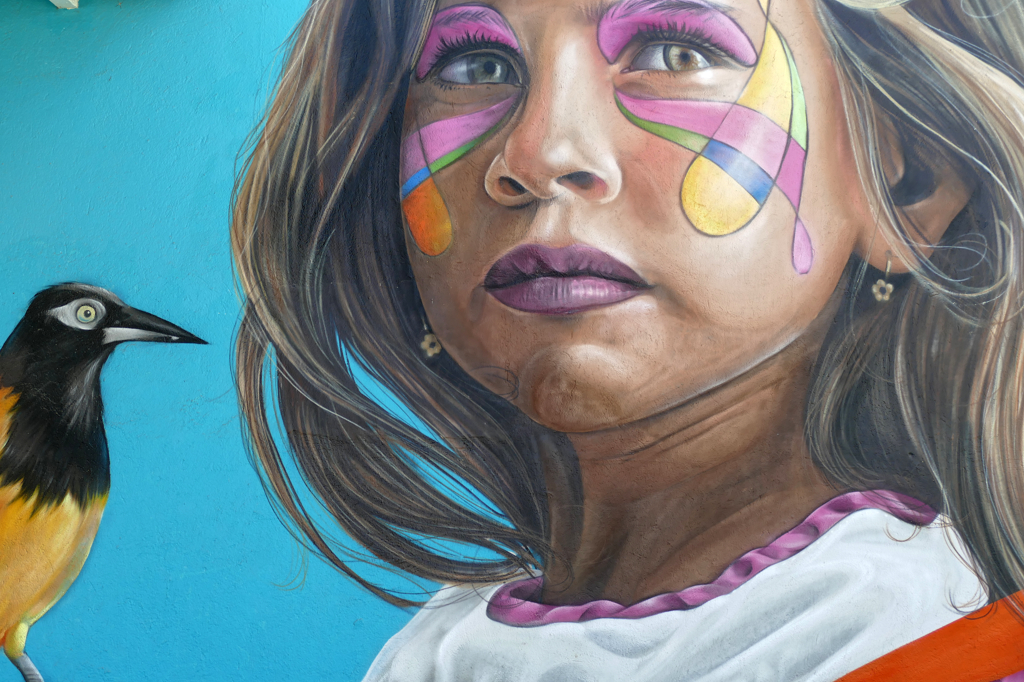
After about one kilometer, as I’m still busy figuring out how to get the right speed, my phone which is attached to the handlebar suddenly plays a cute tropical tune. Also, I see an info page opening on the screen. This is the App’s way of informing me that I’ve approached one of the murals. Hence, I stop to read the short text about the artist and snap a couple of pix. And then, off I go northwards where the tropical tune announces the next great piece of street art.
Same procedure: Paddle, read, snap, repeat.
Man, this is so much fun.
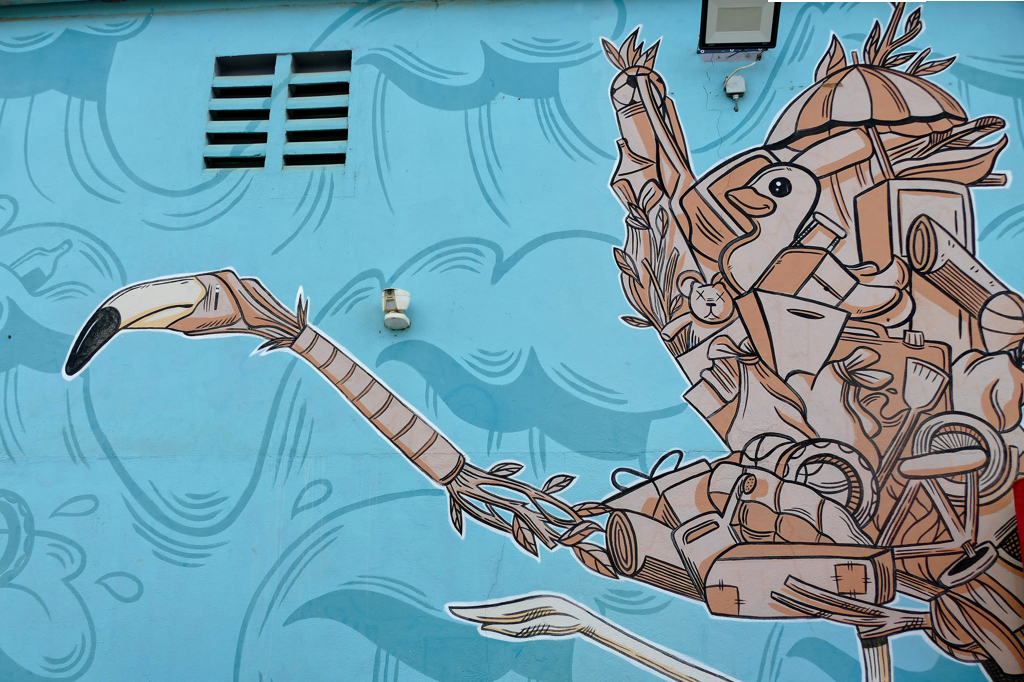
This way, I’m moving the blue dot across the map from north to south where I explore the quirky ruins of the Esmeralda Hotel where various urban artists left their traces. By now it’s noon, it’s really hot. I’m glad that I took a large bottle of water with me.
Born to be Wild
As I’m crossing Bonaire’s south from the west to the rough east coast, I dare to put the bike into a higher gear. Immediately, without much paddling, the bike speeds at 30 kilometers per hour. For a car, that’s not fast. But I’m sitting on a bicycle wearing shorts and a T-shirt and no helmet. On this country road, a goat, a donkey, or even just a lizard can unexpectedly cross the road. I slow down to 27. It’s awesome: I’m hardly paddling at all, and I’m basically racing across the island. I’m amazed. And a bit intimidated.
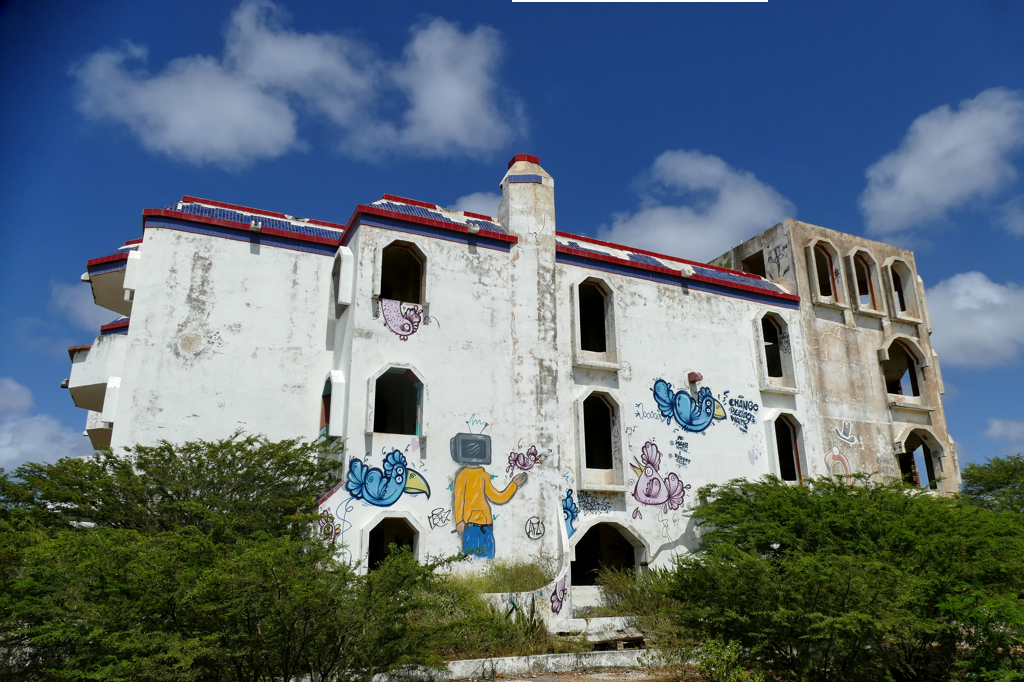
As I reach Lac Bay on the east coast, I don’t need to check my watch to know that it’s about lunchtime. I’m hungry and my water bottle is almost empty and I need a break. Hence, it’s a good thing that the App doesn’t only show where to see the most beautiful street art but also where to find the best street food. I park my bike and grab a delicious fish wrap at the Caribebonaire food truck while watching the windsurfers gliding by.
All Good Things Must Come to an End
Before I head back to Kralendijk, I quickly pay the abandoned shrimp factory a visit where I find some of the most inspiring pieces.
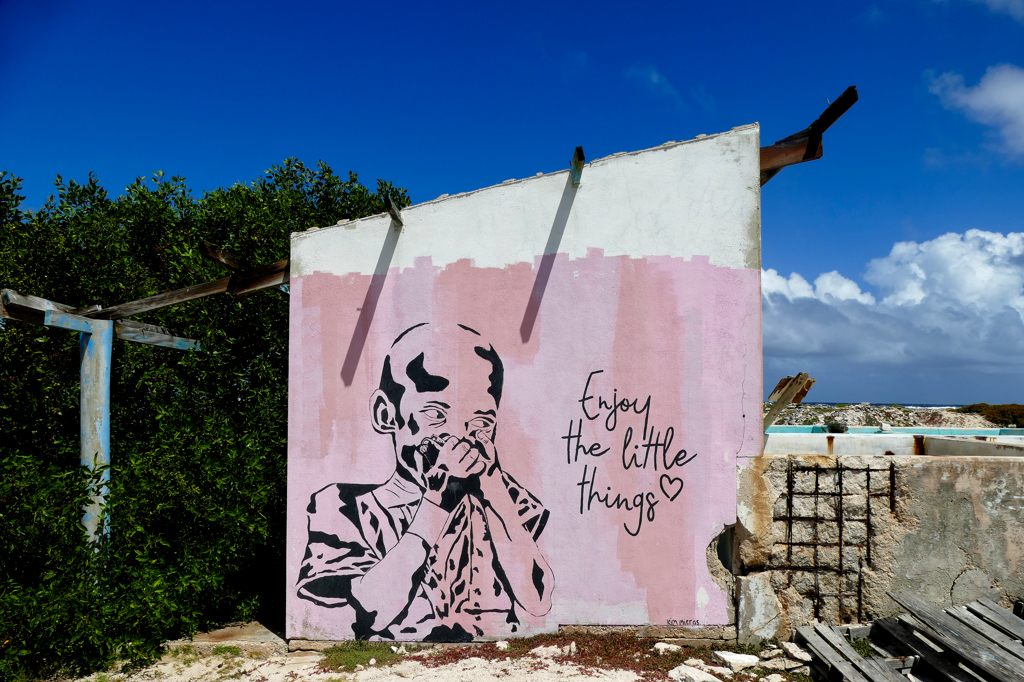
On the way back, I stop at Playa Palu. It’s 3 p. m. and Reinier is closing his store only at 5. I lock the bike, undress in the shade of a tree, and jump into the crystal-clear water. After an extended swim, I bring the bike back.
It was such an inspiring experience, and I had so much fun!
The whole concept of this tour is so simple and yet absolutely genius. I actually cycled about 35 kilometers with just a very short lunch break – and did not get tired.
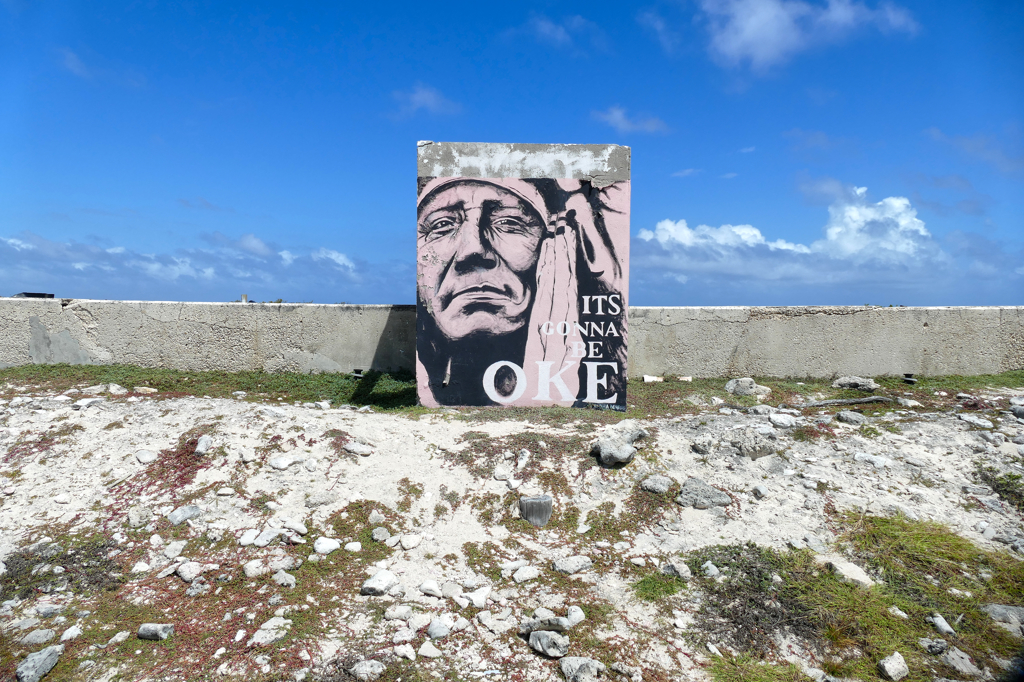
Since I cannot introduce all the wonderful murals I got to see on my tour in this post, there is a special post dealing exclusively with Bonaire’s street art.
Update 2025
Sadly, the Green Bikes Bonaire closed its business. But that doesn’t mean that you cannot enjoy a tour by renting a bike from a different company. Then, you can use my post BONAIRE Totally Unexpected: Street Food And Urban Art Tour for guidance. There, I’ve listed all the most intriguing murals and marked them on a map.
Also, I put together lots of info on the upcoming Carnival Season in my post Carnival 2025: Floats’N’Festivities on ARUBA, BONAIRE, and CURACAO so you might want to check that one out before you join the fun in Bonaire.
What To Pack For Bonaire
Don’t worry, I won’t tell you how many T-shirts to pack. I know you’re a big girl or guy and can decide for yourself. Also, despite suffering from a mild form of OCD, I’m pretty chill when it comes to packing. If I forget something at home, I can always purchase it on the spot. Nevertheless, I’d like to point out a couple of items that will make your stay in Bonaire more comfortable. Although you can purchase most of these things on the island, you will probably pay much more money for much less quality.
Water Bottle
To my great delight, tap water on Bonaire – as well as on the other two islands – is drinkable. More precisely, it’s not just drinkable, it’s actually very tasty. This does not only save you a lot of money since bottled water is actually pretty pricey. Most importantly, this is a wonderful contribution to the environment since you don’t have to waste those nasty plastic bottles. And no, recycling is not the best answer. The best answer is to avoid waste in the first place.
Therefore, when coming to Bonaire, bring your favorite water bottle and fill it at your accommodations faucets.
Now, that’s what I call a free refill!
Water Shoes
Whether you are snorkeling, swimming, or just frolicking in cool waters: Water shoes should be a must for every beach bum. I bought mine only for my trip to the ABC islands where I was wearing them on basically every beach apart from very few spots in Aruba. The fact is that even some of the sand beaches have nasty rocks in the water that might hurt your feet badly.
Some of the beaches in Curaçao and most of all in Bonaire are practically inaccessible by bare feet. Hence, purchasing a pair of high-quality water shoes was one of my best investments. I wish I had them already on my trips to Croatia where there were sea urchins and, most recently, to Greece, where in some places the waters weren’t accessible without soles with a good grip.
Hence, I’d argue you don’t need necessarily flippers, but you definitely should bring a pair of high-quality water shoes. Get them at a designated dive store and do not buy the cheap crap at your local drugstore.
Dry Bag
Especially if you have an expensive camera or other high-maintenance gadgets you should invest in a high-quality dry bag. For me, the bag doesn’t have to protect my electronics two meters under the sea, I only need protection against splashing for instance on boat rides. And while protecting against water is crucial, a thoroughly closed dry bag protects my camera also against dust and very fine sand on the beach. Mind you, dust and especially grains of sand can cause as much damage to your camera as water.
Cell Phone Dry Bag
For the same reasons that you should buy a dry bag for larger gadgets, you should get a good dry bag for your cell phone. Obviously, you can just throw it in your large dry bag together with your camera and other stuff. But chances are that you need to use your phone far more often than your camera – for instance if you want to check the time or a message. A dry bag for cell phones is transparent and you can still use your phone normally. Also, it’s a great way to snap some underwater shots. However, do yourself a favor and make sure that the bag is really waterproof before you put your phone inside.
Lock Tote
As you know, I’m a solo traveller. That comes with many advantages – as you can read in my post solo travel – PROs and CONs – but there are also some disadvantages – as you can read in the very same post.
One of the major disadvantages is that you don’t have anyone to watch your stuff while you go swimming or snorkeling or just for a short beach walk. While you can still schlepp everything with you on a walk, you are risking that someone pinches your stuff while you are frolicking in the water.
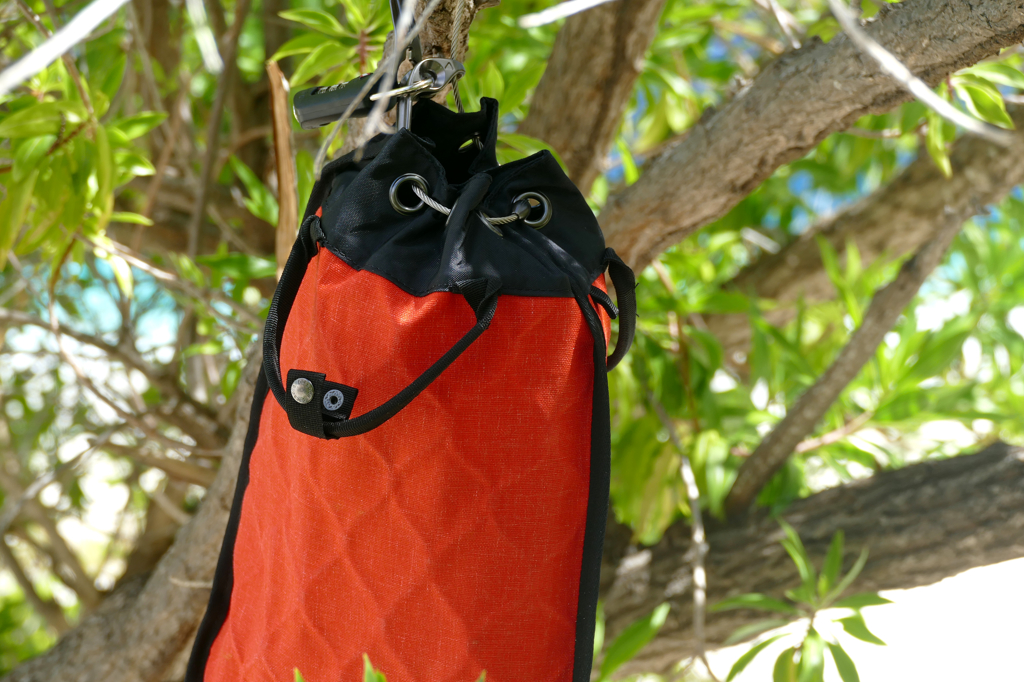
A lock tote is a perfect solution to this problem: You put all your valuables inside and pull the tote close. Then, you can wrap the steel cable around a pole. That can be a wooden parasol that you find on some beaches. Or a fence. Or even a big branch of a tree. Actually, you can also wrap it around your beach chair – it’s not very likely that some thief will walk away with an entire beach chair.
Anyway, the point is to protect your valuables against petty quick’n’dirty theft. If someone wants to rob you at gunpoint, your lock tote won’t be much of a help, obviously. But we are talking about protecting your stuff while you are snorkeling, not protecting you in an urban no-go-neighborhood.
By the way, a lock tote is not only great for solo travellers but also for couples as they might want to go swimming, snorkeling, and strolling together.
Adapter
The world is so globalized and yet the number of different plugs and voltages around the globe is just amazing. I’m linking to a complete overview in my post World’s Most Complete Travel Information. Usually, adapters are easy to obtain; at least those that enable you to plug your device in. But then there is still the problem with the voltage. While chargers are normally equipped for different voltages, this is not the case with gadgets like hair dryers, electric razors, and the like. For those, you need an adapter that can switch between the different voltages. Also, if you travel a lot, a versatile adapter that connects to many different plugs and can be adjusted according to the specific voltage is certainly a better option than having loads of those individual plastic thingies.
Snorkeling Mask
As I pointed out above, you can obtain many of the items listed in this chapter right on the island. And this is particularly true when it comes to snorkeling masks. You can buy one or just even rent it. However, since snorkeling with a comfortable mask is not only more fun but also safer, having your own high-quality mask available at any time is certainly a good idea in a place where snorkeling is one of the main activities.
Sun Screen And After Sun Lotion
Obviously, you can buy suntan lotion at every supermarket in Bonaire, and there even is a drugstore on Kaya Grandi #25. However, they don’t have such a great choice and most importantly, cosmetics are far more expensive than for instance in Europe.
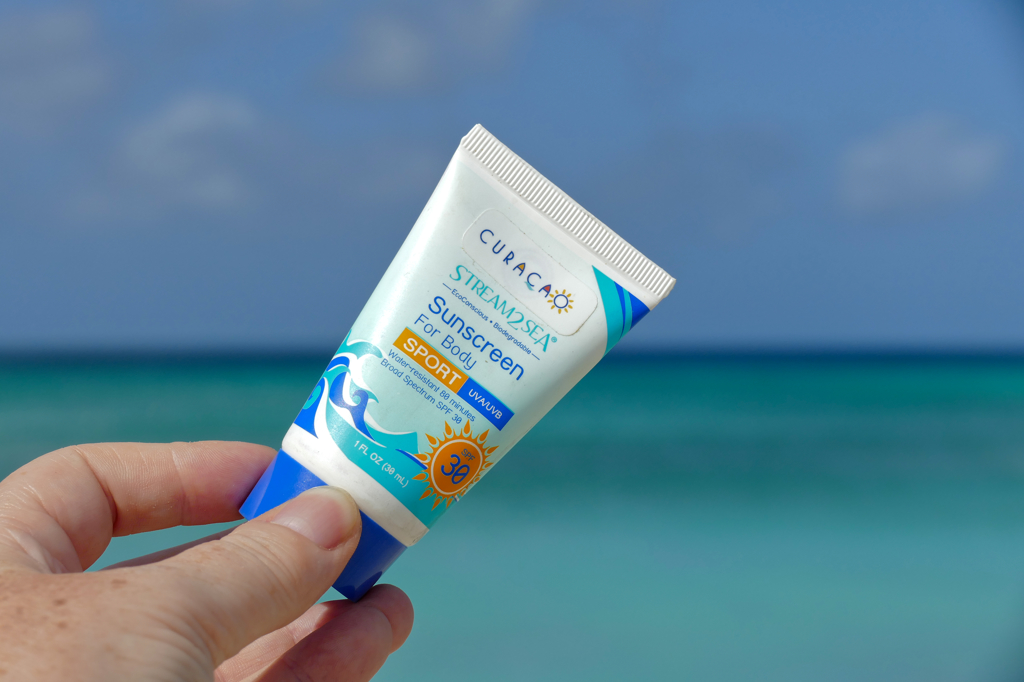
Especially if you have sensitive skin or if you want to buy an eco-friendly product, you better bring it with you than buy it on the island.
Did I forget something? If so, please add it in the comment section below.
A Little Bit Of History
So why is Bonaire part of the Netherlands and why is the local language full of Spanish words? Well, I won’t bore you with the island’s ever-changing history but would like to point out just a couple of milestones that will enhance your understanding of the island, its culture, and – most importantly – its people.
Amerigo Vespucci couldn’t sit still in his hometown Florence. So he explored the world and together with Alonso de Ojeda, he discovered Bonaire in 1499. However, at that time, the island had been inhabited by Arawak Indians for centuries. Alonso de Ojeda named the island after the Indian word bojnaj which translates to low land.
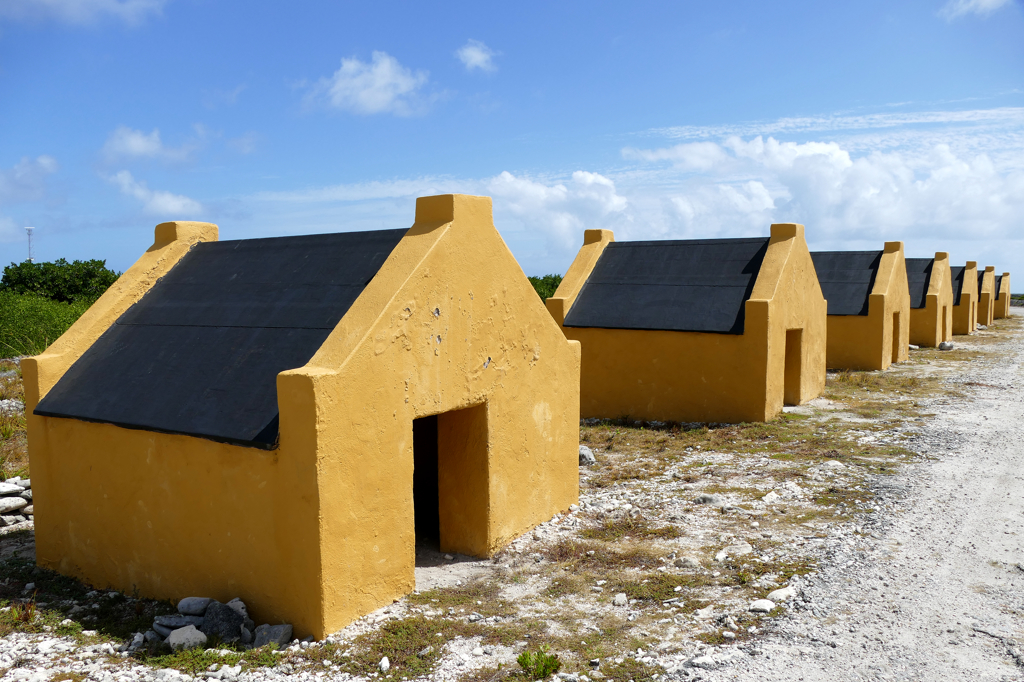
Eventually, the Spanish tried to colonize the island between 1527 and 1634, but weren’t really lucky: In 1634, the Dutch took possession of Bonaire and established a military base on the island. As the Dutch West Indies Company produced salt in Bonaire, they brought about 100 African slaves to the island.
In the early 19th century, the British obtained the island. Albeit, they didn’t care much about their latest acquisition. Therefore, remaining pretty much unprotected, Bonaire suffered from raids by French and English pirates.
In 1816, the Dutch regained control over the island. However, they faced significant problems in the following years as many trades became unprofitable. Also, slavery was abolished in 1863.
Tables Turn
To make a living, many islanders left for Aruba and Curaçao to work in the oil refineries.
In the 1950s, however, the upcoming tourism boosted the local economy. Today, the majority of the Bonairians make their living through the tourist sector. Nevertheless, the government is keen to promote sustainable and eco-friendly tourism. Established way back in 1969, the Washington Slagbaai National Park was the first nature reserve in the Dutch Antilles. Also, the waters around Bonaire were declared a nature reserve as early as 1979.
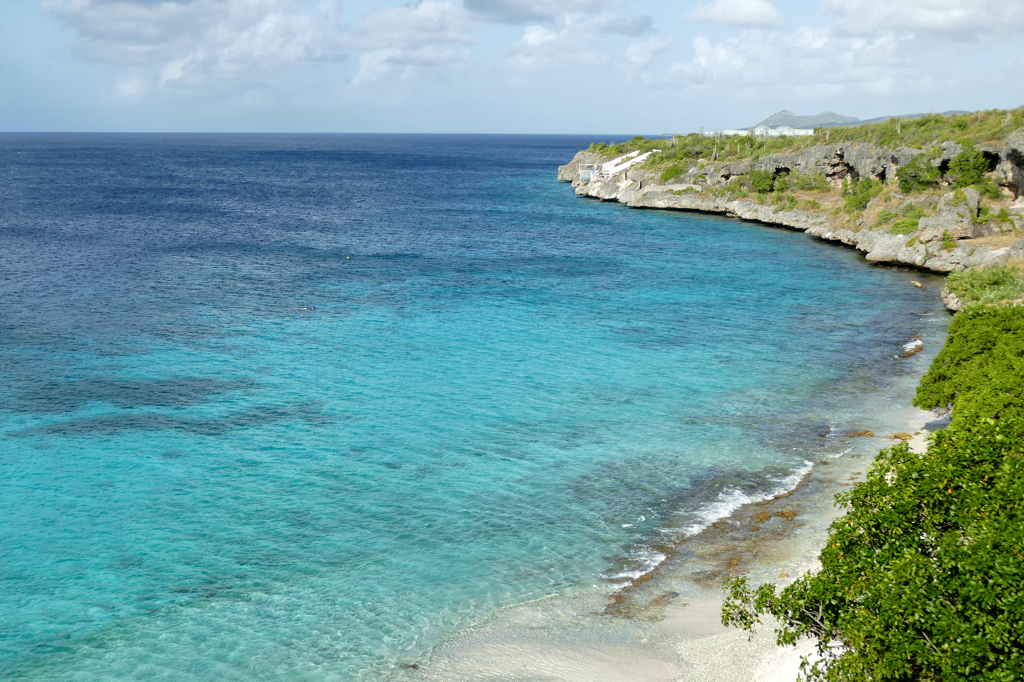
Interestingly, to this date, the Dutch Antilles are not independent states. Yet, after the dissolution of the National Association of the Netherlands Antilles in 2010, Bonaire became a so-called special municipality of the Netherlands. Consequently, Dutch King Willem Alexander is the head of state, but a local authority governs the island. While it is a bit absurd that an island is politically part of a country that is about 8,000 kilometers away, this status does come with certain perks. For instance, the inhabitants of the ABC islands have a Dutch passport which grants them the same great freedom of travel as all the other members of the European Union.
Practical Information
How to Get There
A couple of airlines serve Bonaire from the USA, and KLM and TUI get there all the way from Europe. When you see the size and the layout of the airport, you’ll understand why this takes me very much by surprise. Obviously, there are also air connections to Aruba and Curaçao by the local companies Divi Divi Air and EZAir.
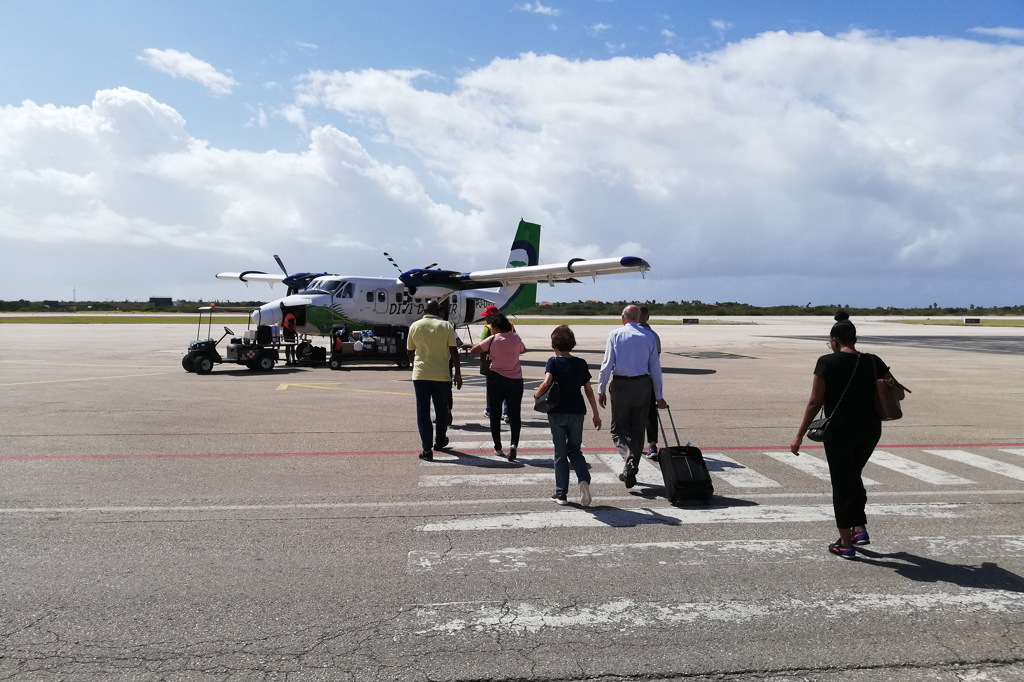
Interestingly, you need to go through emigration respectively passport control before entering the airport edifice. The airport building is an open-air construction and therefore not air-conditioned. This can cause a warmer welcome than you might have expected – especially if you are coming from a northern area. But don’t worry, as you leave the island, you have to freeze in a heavily climatized waiting area. Moderate climatizing seems to be a major challenge in many parts of the world.
Although Bonaire is politically and administratively part of the Netherlands, it does not belong to the Schengen area. Nevertheless, visitors from many countries do not need a visa, but you can check this in the Visa and Embassy Information for all Countries section of my post World’s Most Complete Travel Information.
Nevertheless, even if you don’t need a visa, you’ll have to pay a visitor entry tax of 75 US$ per person per visit. You should do so online so that you can show the corresponding QR code on arrival.
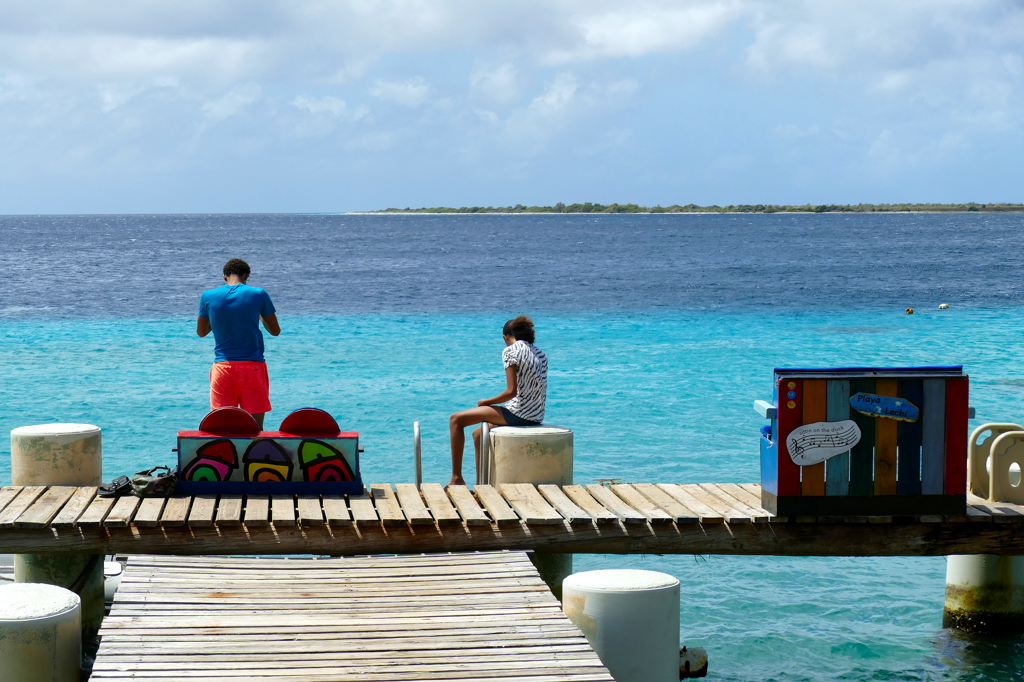
Unfortunately, no public ferries are going to Bonaire. No, neither from Aruba nor from Curaçao. Flying in is your only option to visit unless you are coming by a chartered vessel or on a private ship – or on one of those monstrous cruise liners, obviously.
How to Get Around
First things first: Everyone claims there is no public transportation on the island. The truth is, there is a minibus connecting Kralendijk and Rincon. The bitter truth is, during my entire stay, I’ve spotted a couple of designated bus stops, however, I haven’t seen either passengers waiting or buses passing by. I’m afraid, everyone’s claims are kinda correct.
Also, since diving is the main activity, you need a car to carry all your gear from A to B, obviously. Cars can be rented right at the airport, at your accommodation, and car rental companies.
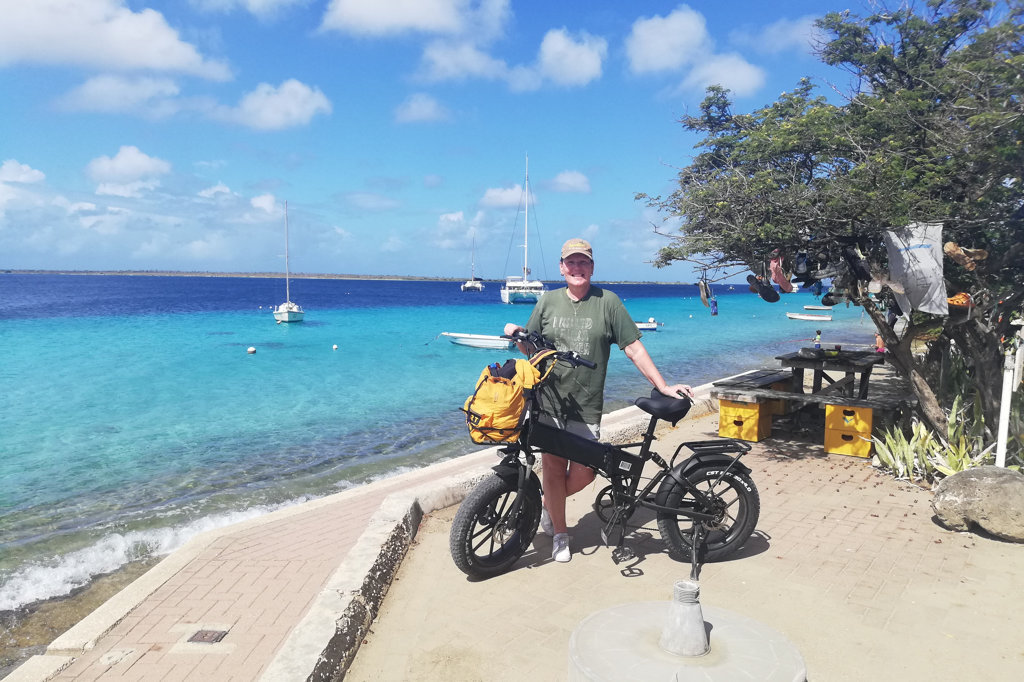
If you don’t need to carry heavy loads and still want to explore the island individually, a scooter or even an e-bike might be a valid alternative. However, I would not ride longer distances after dark as you want to spot those potholes and car drivers to see you.
Especially some day visitors from cruise ships like to go around the island by golf carts.
If you take a cab, confirm the fare beforehand by referring to the price list.
The town of Kralendijk, however, can be easily walked.
Organized Trips
As I pointed out, there are many wonderful spots in Bonaire that can be explored only either by a private vehicle or on an organized tour. The latter will definitely be the less stressful option especially as you are exploring the rough north. Driving on those holed dirt roads is like riding a rollercoaster. Therefore, here are some great tours to choose from*:
Where to Stay
Since tourism is Bonaire’s main industry, there are many kinds of accommodation to choose from. In general, they are a bit more expensive than for instance in Curaçao.
For my stay, I chose a hotel right in the center of Kralendijk within walking distance to basically every place of interest around town. The walking option was one of the reasons I wanted to stay in town: Since I’m not driving, I at least didn’t want to be stuck in a secluded place.
However, if you want to splurge a bit and do have your own vehicle, you might want to opt for something more upscale in a rather secluded area. Either way, you can check out the availability and prices of various lodging options around Bonaire on this map*:
What to Eat
I’d divide Bonaire’s gastro scene into three sections: Firstly, there are upscale restaurants. After all, Brass Boer at Delfins Beach Resort south of Bonaire’s airport was voted the best restaurant in the Caribbean at various times. But real foodies don’t have to break the bank for an excellent meal as there are many small local places preparing traditional food – simple but with a twist. Many of those eateries are found on Kaya Libertador Simon Bolivar, but you’ll find good food in many places. Also, Bonaire’s ethnical mix is reflected in the variety of cuisines: You’ll find Cuban, Jamaican, Dominican, Mexican, Peruvian – you name it.
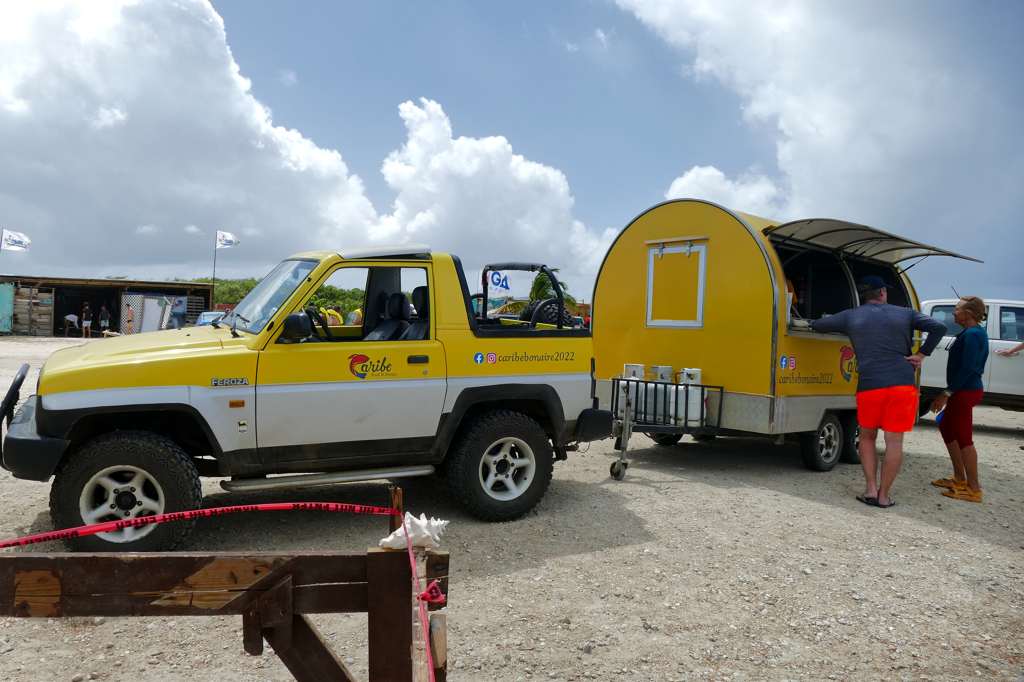
Bonaire’s most charming eateries, however, are the high-quality food trucks that you won’t find only in the streets of Kralendijk, but basically in every bay alongside the coasts. To my amazement, they don’t offer some greasy sausage with a side of soggy fries and a nasty diet coke. Nope, they prepare wraps with the finest fish coming straight from the sea. They make juicy artisan burgers accompanied by crispy potato chips or spicy rice. Need to quench your thirst? Grab a homemade lemonade or a fresh smoothie.
Cash And Cards
In 2011, the local currency was replaced by the US dollar which makes things pretty easy, obviously. Also, major credit cards are accepted even for small amounts at basically all businesses. Nevertheless, if in need of cash, you’ll find ATMs in many places.
The current exchange rate is 1 US$ = 0.85 EUR as of July 2025, but you can check the conversion on this page.
Language
The official language of Bonaire is Dutch. The lingua franca, hence, the most spoken tongue, is Papiamento. Although it’s rooted mainly in Portuguese and also in Spanish, there is a considerable influence of Dutch. As a matter of fact, Papiamento is a creole language that developed on the West African coasts. It has many similarities with crioulo spoken in Cape Verde. In the 16th and 17th centuries, most of the slaves kidnapped to the Caribbean came from Portuguese trading posts on the African west coast. I wrote about this dark chapter in my post on Cape Verde’s main island Santiago.
Howsoever, due to the proximity to the South American continent and many migrant workers from Latin America, most local people speak at least decent Spanish. Obviously, people speak good English, especially if they are working in tourism.
However, it’s always nice to be able to say at least some pleasantries in one of the local languages. You can pick up some words and phrases for instance on Lingohut. This online program offers an amazing choice of more than 45 languages!
Connection and Communication
Although Bonaire belongs to the Netherlands, it is not part of the European Union and the wonderful European roaming regulations do not apply. Consequently, a local SIM card is the cheapest way to stay connected.
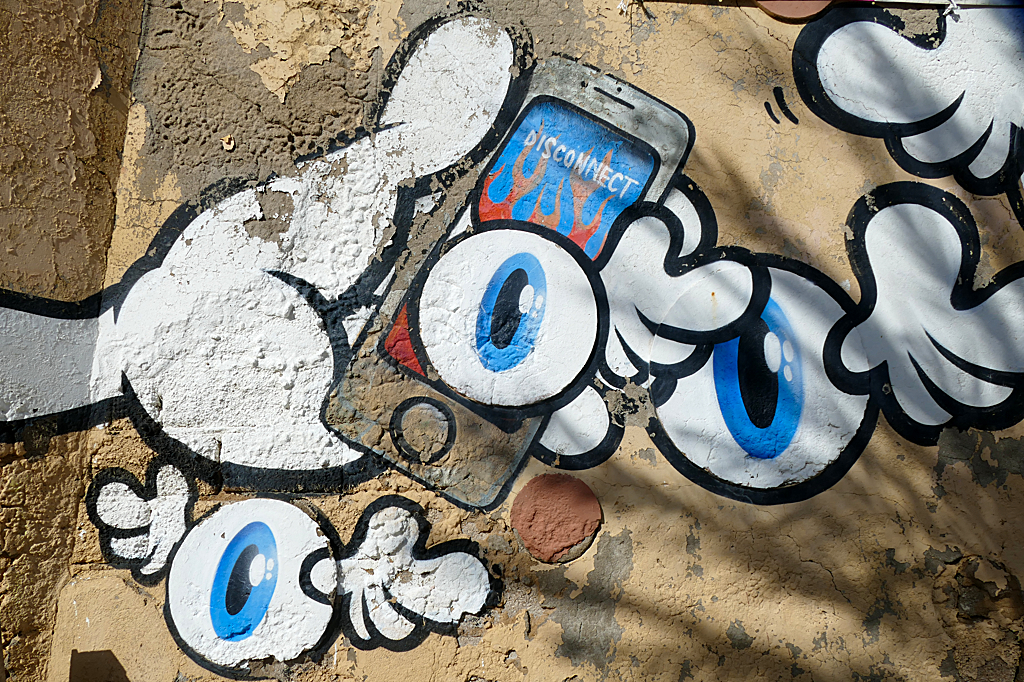
Credit where credit is due: This is a mural in Curaçao’s capital Willemstad created by Dutch street artist Pop Eye.
You can get a SIM card for 15 US$ at Digicel that grants you data for seven days. The one from Flow/Chippie costs 16 US$ and comes with less data. You cannot get cards on arrival at the Flamingo International Airport, but both companies have stores on Kaya Grandi. Don’t forget to make sure that your phone is unlocked and ready for use with any SIM card.
Normally, you are required to show some form of ID, however, I got my card no questions asked.
Digicel offers roaming at no extra charge in Aruba and Curacao.
Howsoever, if you don’t insist on being online 24/7, you’ll probably do with the free Wifi offered at every hotel and most restaurants and bars – just sayin’.
In Bonaire, they use mainly plug type A just like in the USA. The voltage is 110 V and the frequency is 50 Hz. Occasionally, you’ll find outlets C and F which are common in Europe. As long as you have the right connecting plug, the voltage and frequency shouldn’t really matter as nowadays, all chargers have integrated adapters.
By the way, you’ll find comprehensive travel info in my post World’s Most Complete Travel Information – an indispensable globetrotter-classic.
Bonaire was the B of my visit to the ABC Islands. You can read about Aruba and Curaçao in separate posts. Also, there is a comprehensive roundup of my entire trip including much valuable info in the post As Easy As ABC: Island Hopping Between Aruba, Bonaire, And Curacao.
Map
On this map, you can see where all the mesmerizing places I’m introducing in this post are located.
Clicking on the slider symbol at the top left or the full-screen icon at the top right will display the whole map including the legend.
Pinnable Pictures
If you choose to pin this post for later, please use one of these pictures:
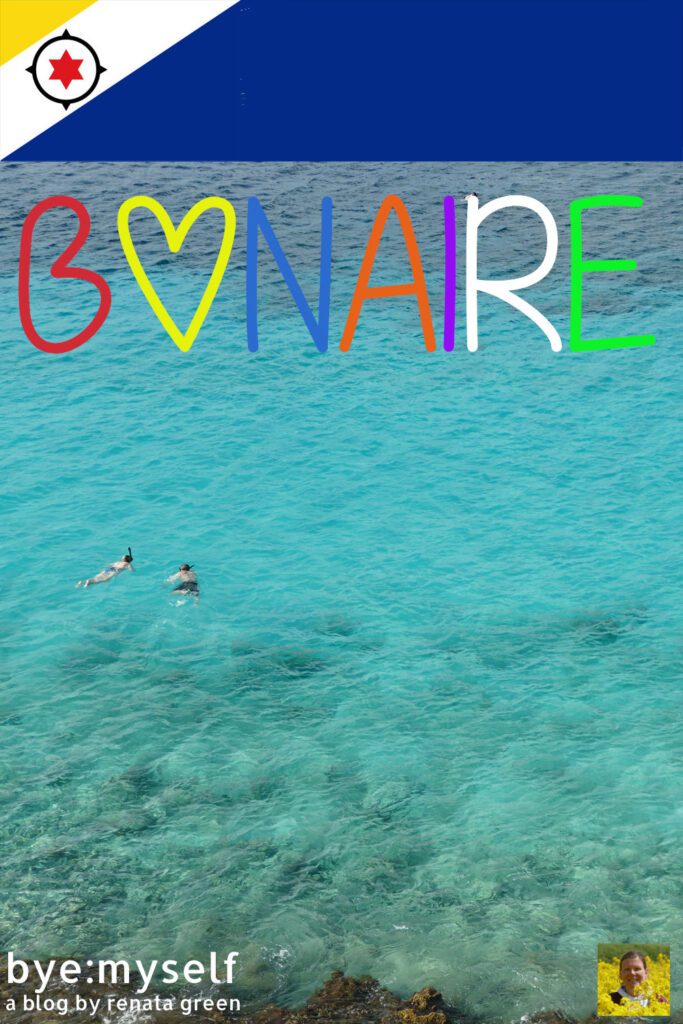
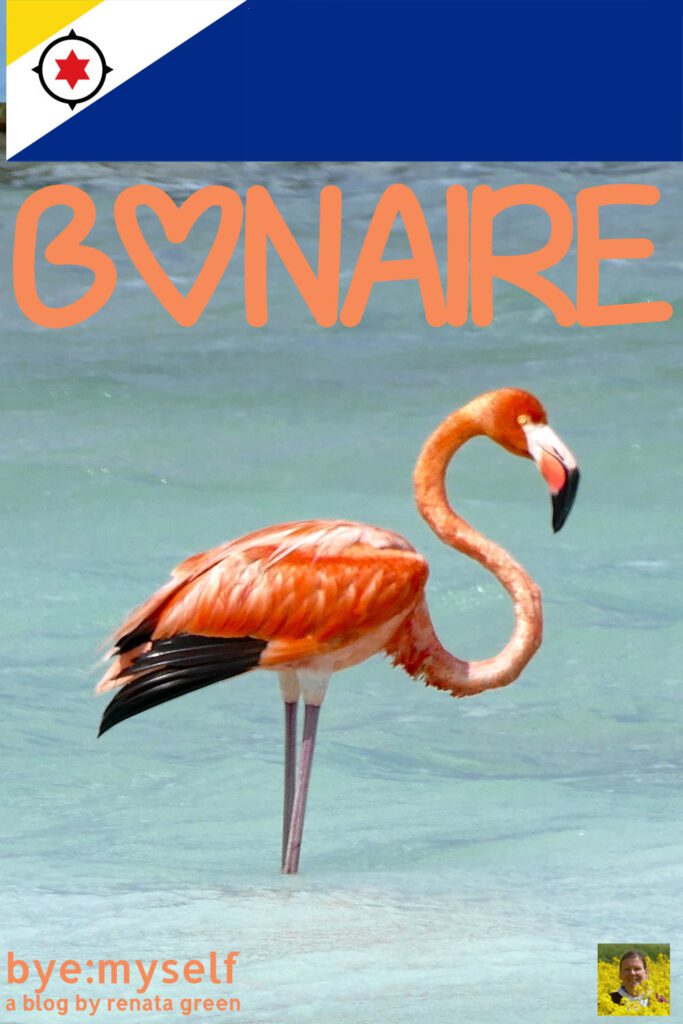
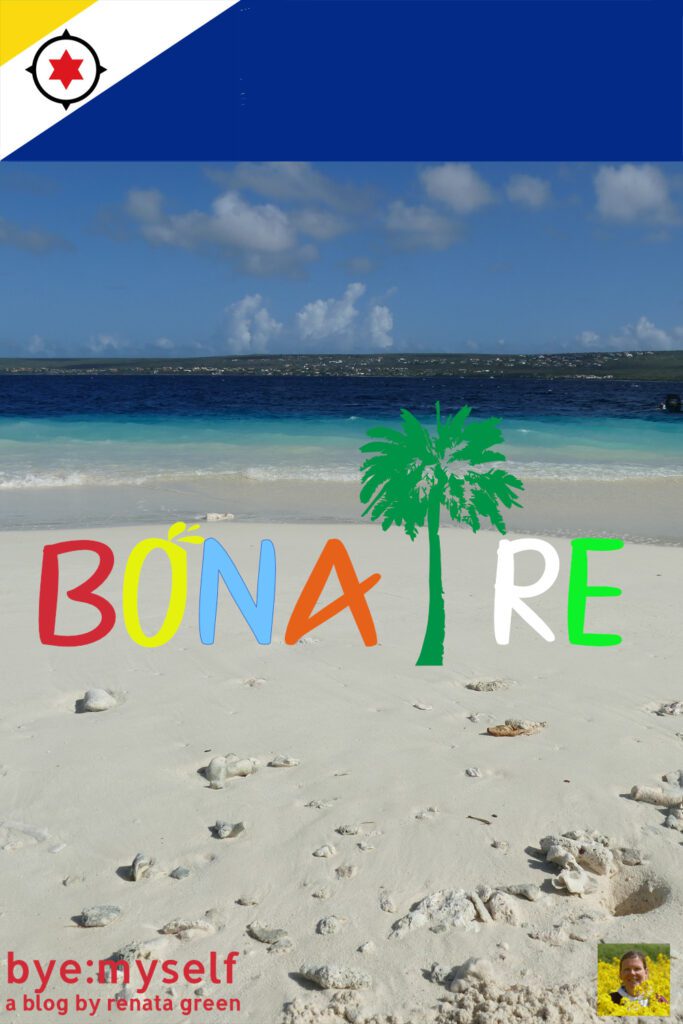
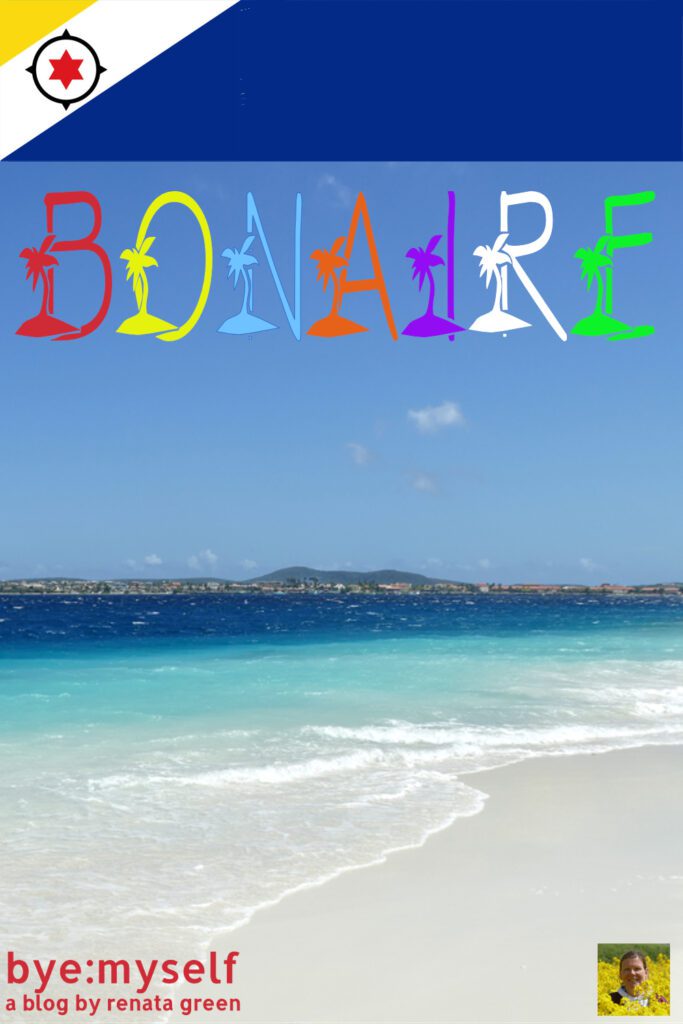
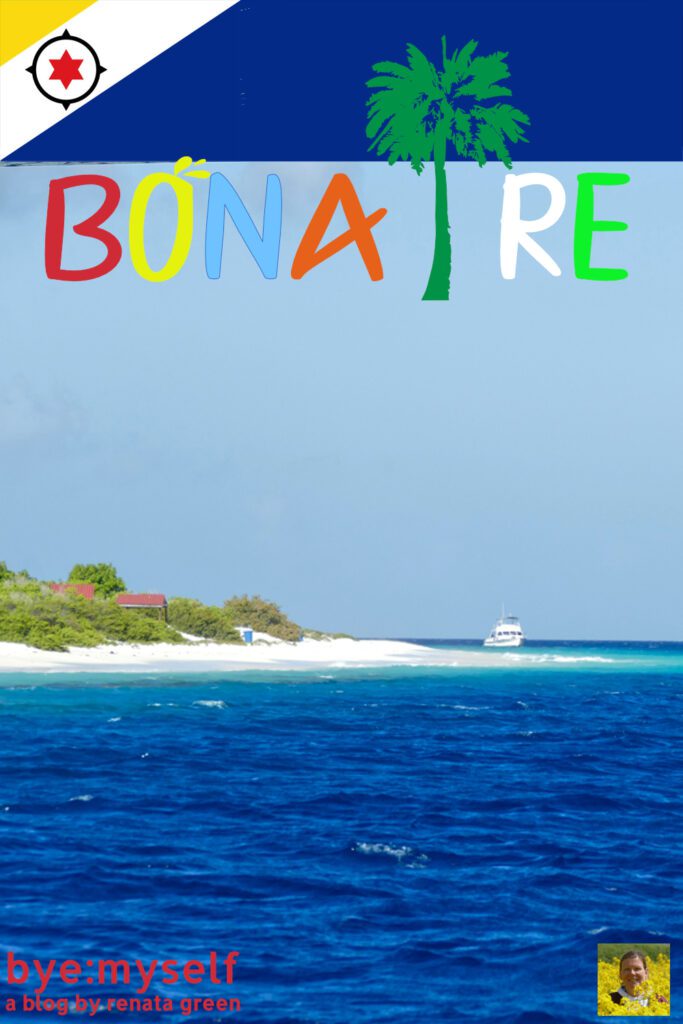
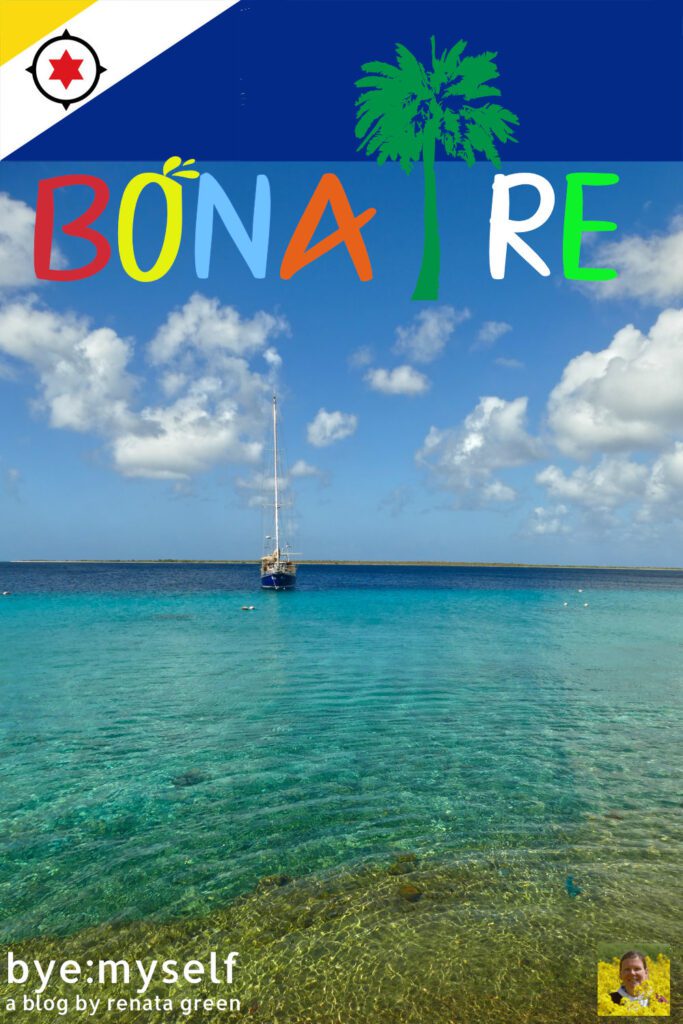
Note: I’m completing, editing, and updating this post regularly – last in May 2025.
Did You Enjoy This Post? Then You Might Like Also These:
Beyond Your Imagination: The 15 Best Beaches in Barbados You Can Easily Visit by Public Bus
What Not to Miss in ARUBA, the Caribbean A-Lister
MAGNIFICENT MARTINIQUE: Ten Places Not to Miss on Your Visit (even when exploring by public bus)
ARUBA: The Powerful Murals of San Nicolas
PLAYA SANTA LUCIA – Cuba’s Secluded Tropical Paradise
Murals in CURACAO: The Best Street Art Projects in Willemstad
CURACAO – Guide to the Caribbean Island That Has It All
Best Places to Visit in Basse Terre, the Western Wing of GUADELOUPE (also by public bus)
I am very appreciative that Diamond Public Relations together with Tourism Corporation Bonaire organized wonderful tours around the island for me and covered the visitor entry tax as well as the STINAPA Nature Fee. They also initiated the street art and street food tour in cooperation with Greenbikes Bonaire. Nevertheless, the description of these activities and all opinions on their services are mine and were in no way influenced by my cooperation partners.
* This is an affiliate link. If you book through this page, not only do you get the best deal. I also get a small commission that helps me run this blog. Thank you so much for supporting me!
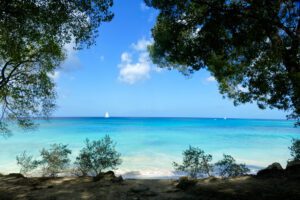
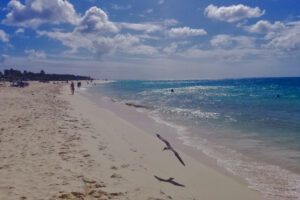
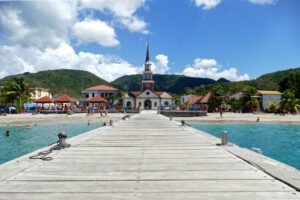
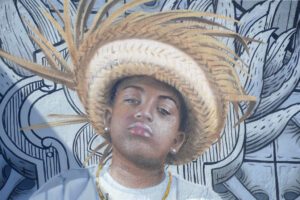
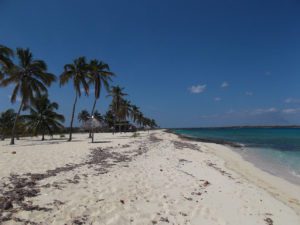
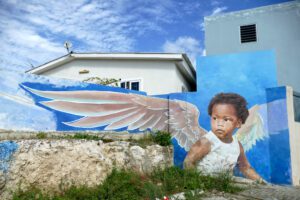
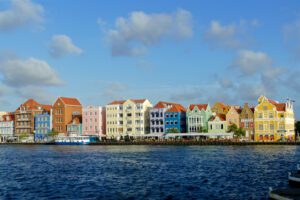
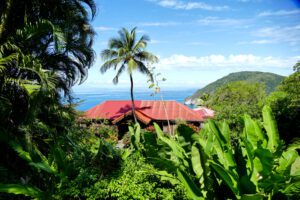
This guide to Bonaire is so informative! I appreciate you taking the time and effort to put this article together.
Thank you, glad you like it! Bonaire is wonderful – especially for divers.
looks so beautiful! the sea looks magical and the animals are so vibrant and in great numbers. that’s the life for me, beautiful photos, very inspiring. I liked the guide too
It is absolutely paradisiac 🙂 and yes, the wildlife is pretty impressive.
Bonaire has never been on my radar before. It sounds like a beautiful place to visit. It would be great to visit to see the historic buildings and the wildlife and also enjoy the gorgeous beaches there.
Yes, Bonaire is still pretty much under the radar – which makes it very chill 😀
Oh my gosh, such beautiful sea and clear sea water and I just want to jump in immediately. Nice photos! Knycx Journeying
Thank you but it’s easy to take nice photos of such a wonderful place 😉
This looks like heaven to me. I would definitely spend most of my time diving, but there are so many interesting things to see even above the waters.
Yes, it’s not easy to keep your feet dry when in Bonaire 😉
Your post tempts me to book a ticket to Bonaire and be one with nature (and all those stunning murals and flamingos and salt flats and more!!).. Like Natascha, I found that lock tote so very cool…. when we go to the beach or other such location, we often have to have one person guarding any of the valuables we just couldn’t leave in our vehicle or hotel…
I am so in awe of the details and obvious effort you put into each post. Loved reading everything about Bonaire..
Thank you so much for your kind comment! I’m happy that I could inspire you – and who knows, maybe we meet in Bonaire one of these days 😉
Bonaire looks like a dream to me! It’s good you listed other things to do besides diving as I’m not good at it at all! I love the murals here, it adds to the colorful landscape. I’d also like to see the museums and have a few drinks at that bar!
Seeing the murals on a bike tour was one of the highlights of my trip. And the drinks at the bar were good, too 😉
Oh my god, I was not aware that Bonaire is such a great destination. I absolutely love flamingoes – so seing them everywhere on walls and live in the water sounds like great fun. Krajlendijk looks so colorful and relaxing too. And many thanks for the tip with the lock tote – first time I see something like that. We are two, but it also sucks that we cannot go swimming and/ or snorkeling together.
Yes, Bonaire is wonderful – fun and at the same time relaxed: The epitome of Caribbean.
And yes, the tote is great. Although I don’t suspect anyone to steal my stuff, I am simply are more relaxed knowing that my valuables are safe.